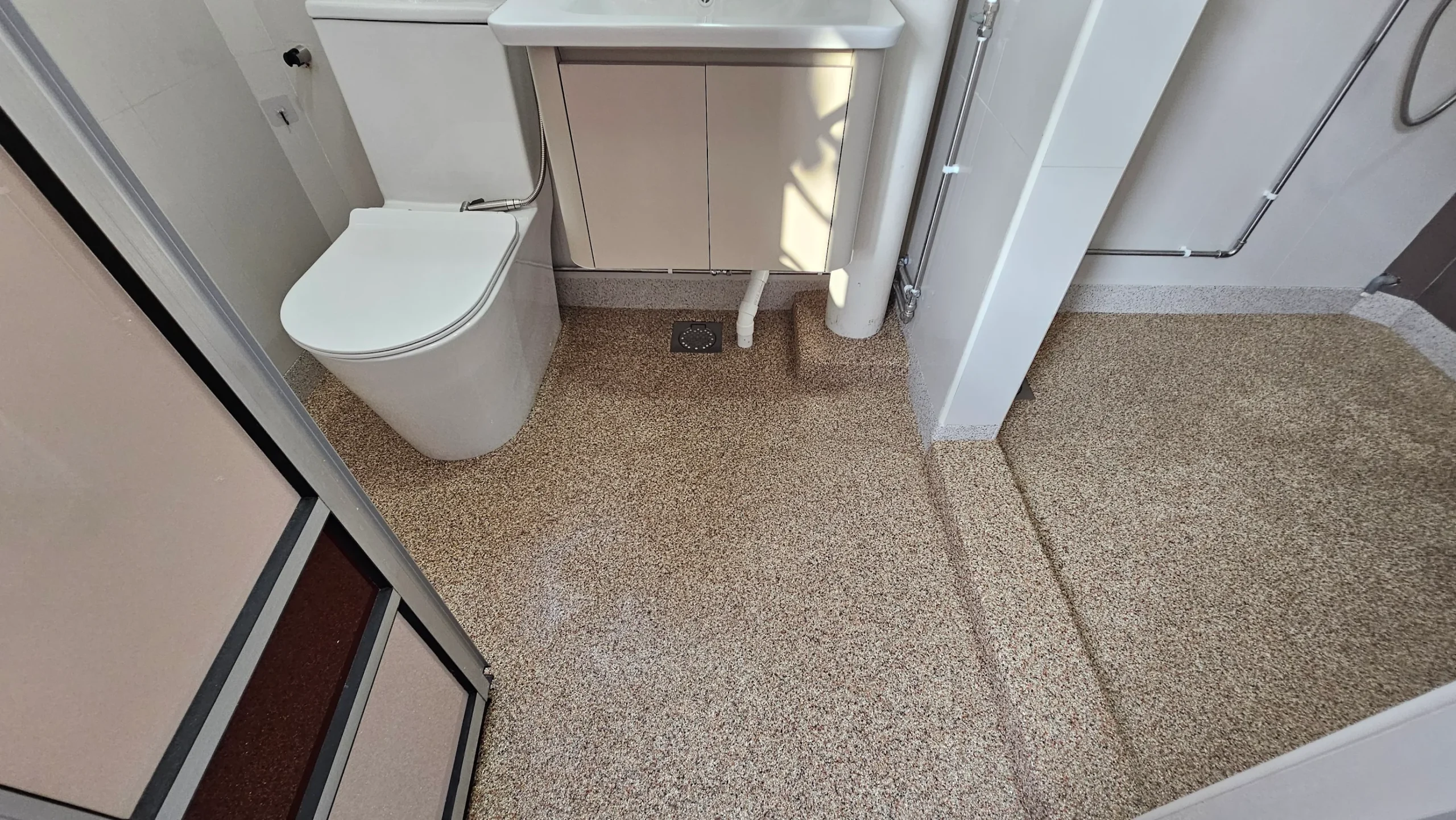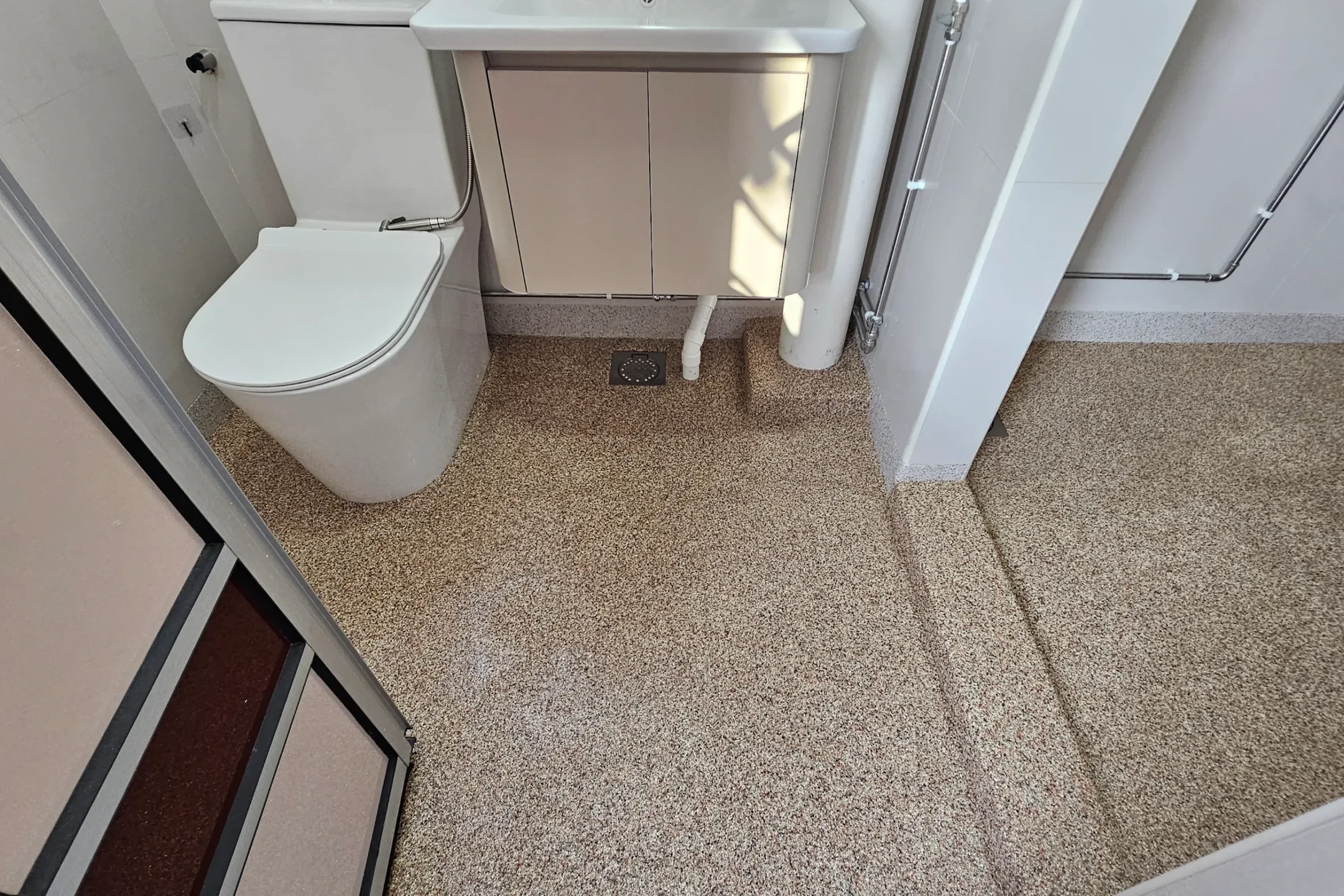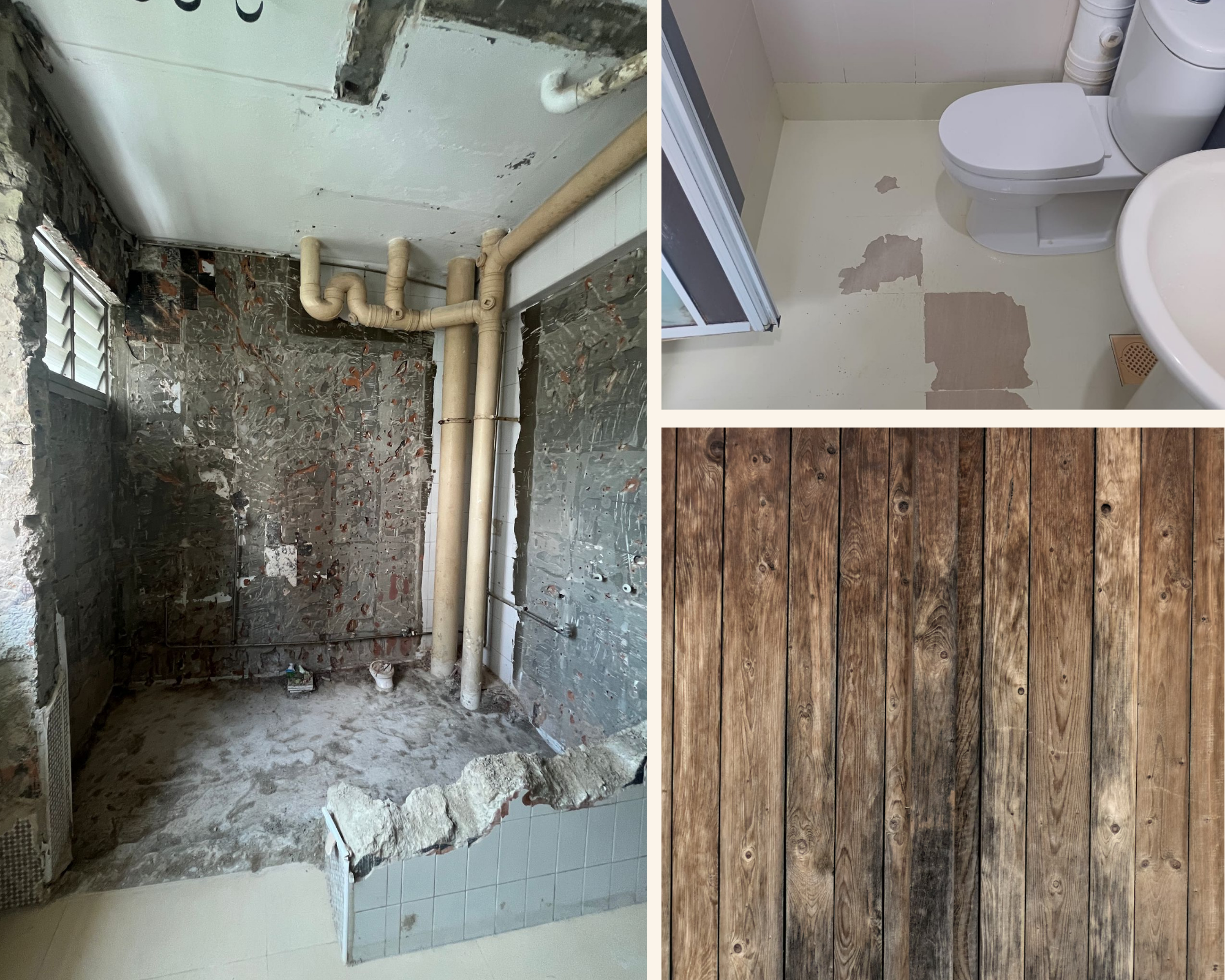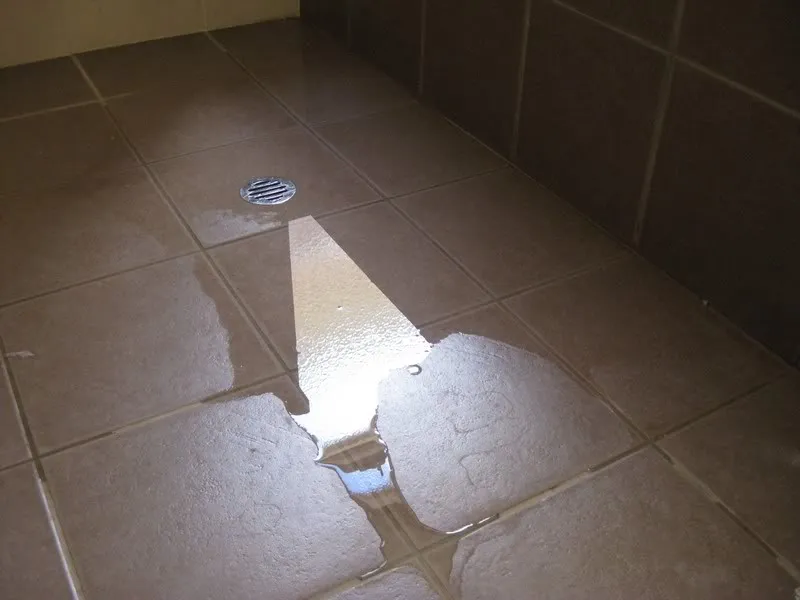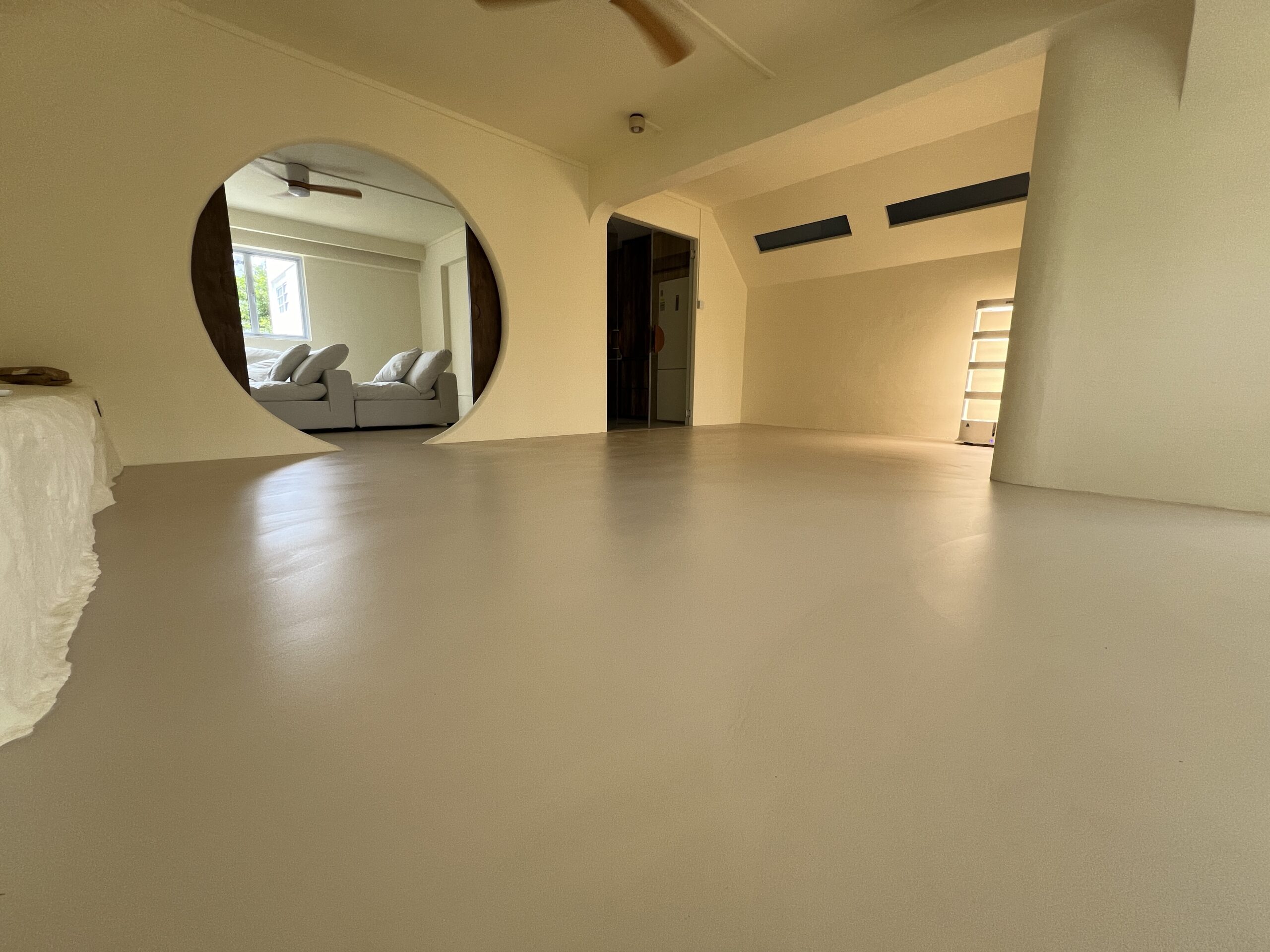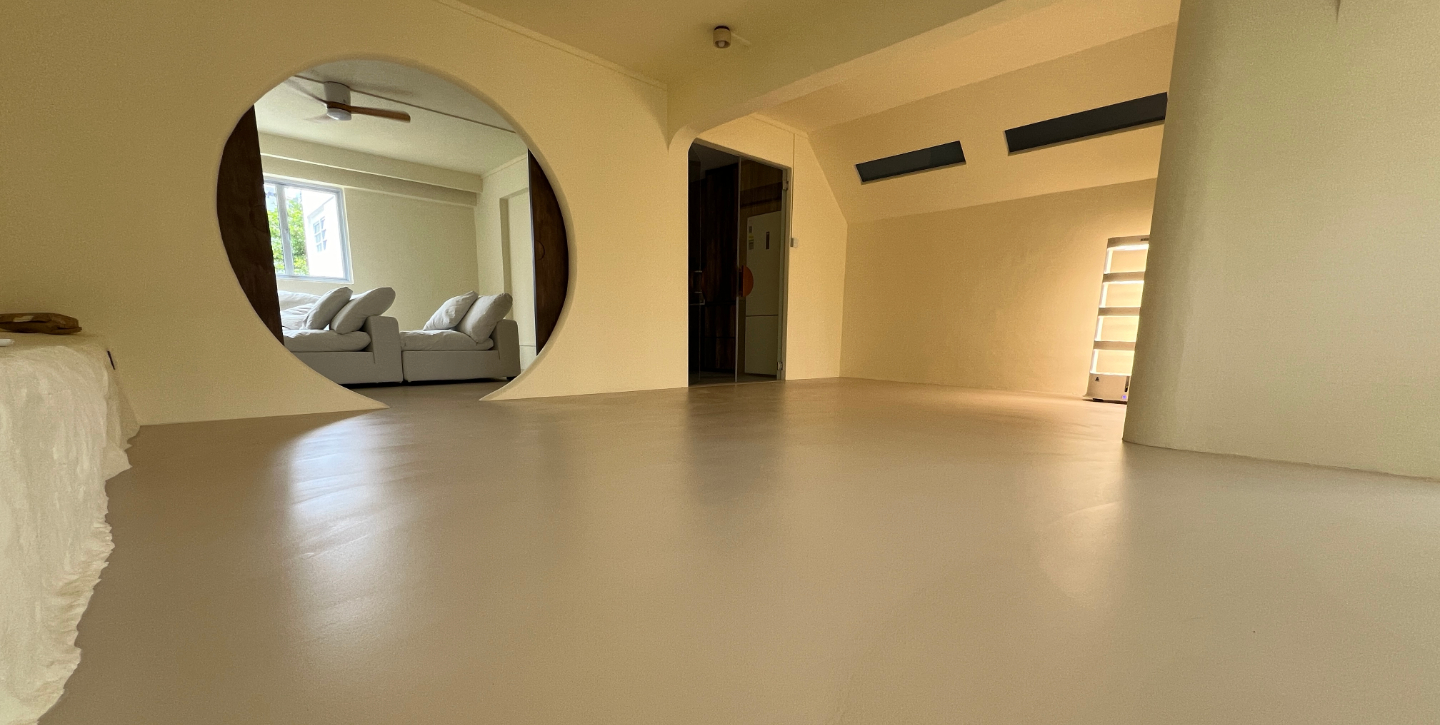Epoxy Overlay vs Tiles in Singapore: Which Is Better for Your Home?
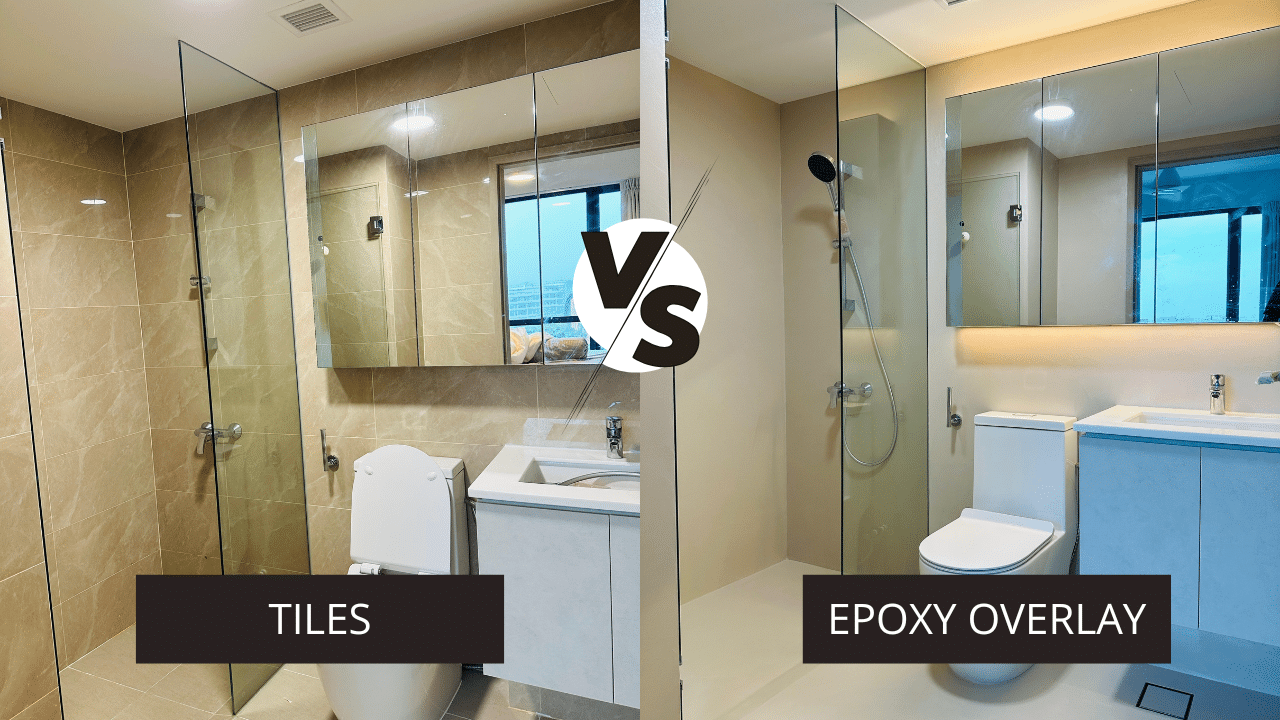
When renovating a home in Singapore, one of the common questions is: Should I choose traditional tiles or an epoxy overlay? Both options are popular, and each comes with its own strengths and limitations. The right choice often depends on your budget, lifestyle, and the type of space you are renovating.
This guide compares epoxy overlays and tiles across cost, durability, maintenance, and design, and is especially useful if you’re planning a bathroom renovation in Singapore or looking for a alternative to tiles that offers both style and practicality.
Cost Comparison – Tile Hacking vs Epoxy Overlay
Tiles:
Tiles are available in a wide price range depending on the material. Ceramic and porcelain options are more affordable, while marble and natural stone are on the higher end. However, overall costs can increase when hacking and disposing of old flooring are required. In addition to the higher cost, hacking tiles can also be messy, noisy, and time-consuming.


Epoxy Overlay:
Epoxy overlays are applied directly over existing tiles, which helps reduce hacking and disposal costs. This approach avoids the disruption of hacking, making installation faster and less intrusive. Pricing varies depending on the type of finish — from modern microcement-effect epoxy finishes (i.e. Ecoluxe) to decorative options like epoxy flakes. On average, epoxy is estimated to be 30–40% cheaper than full re-tiling (industry estimates, 2024–2025).
Tile installation in Singapore typically costs S$10–S$22.50 per square foot (Philip Hacking, 2024–2025), especially when hacking and disposal are included. For HDB projects, complete tiling is often capped at about S$12 per sq ft (Tiling.sg). Basic tile materials can start from as low as S$3 per sq ft (Floorfitters.biz).
Maintenance
Tiles:
Tiles are generally durable and can last for decades if properly installed and maintained. Porcelain and homogeneous tiles, in particular, are known for their scratch resistance and low water absorption. However, homeowners should be aware of a few common maintenance issues:
- Grout upkeep: Grout lines are porous and tend to absorb dirt, moisture, and soap residue. In Singapore’s humid climate, this often leads to mould or mildew growth, which appears as dark marks between tiles. Regular scrubbing or periodic regrouting is often needed to keep grout looking clean.
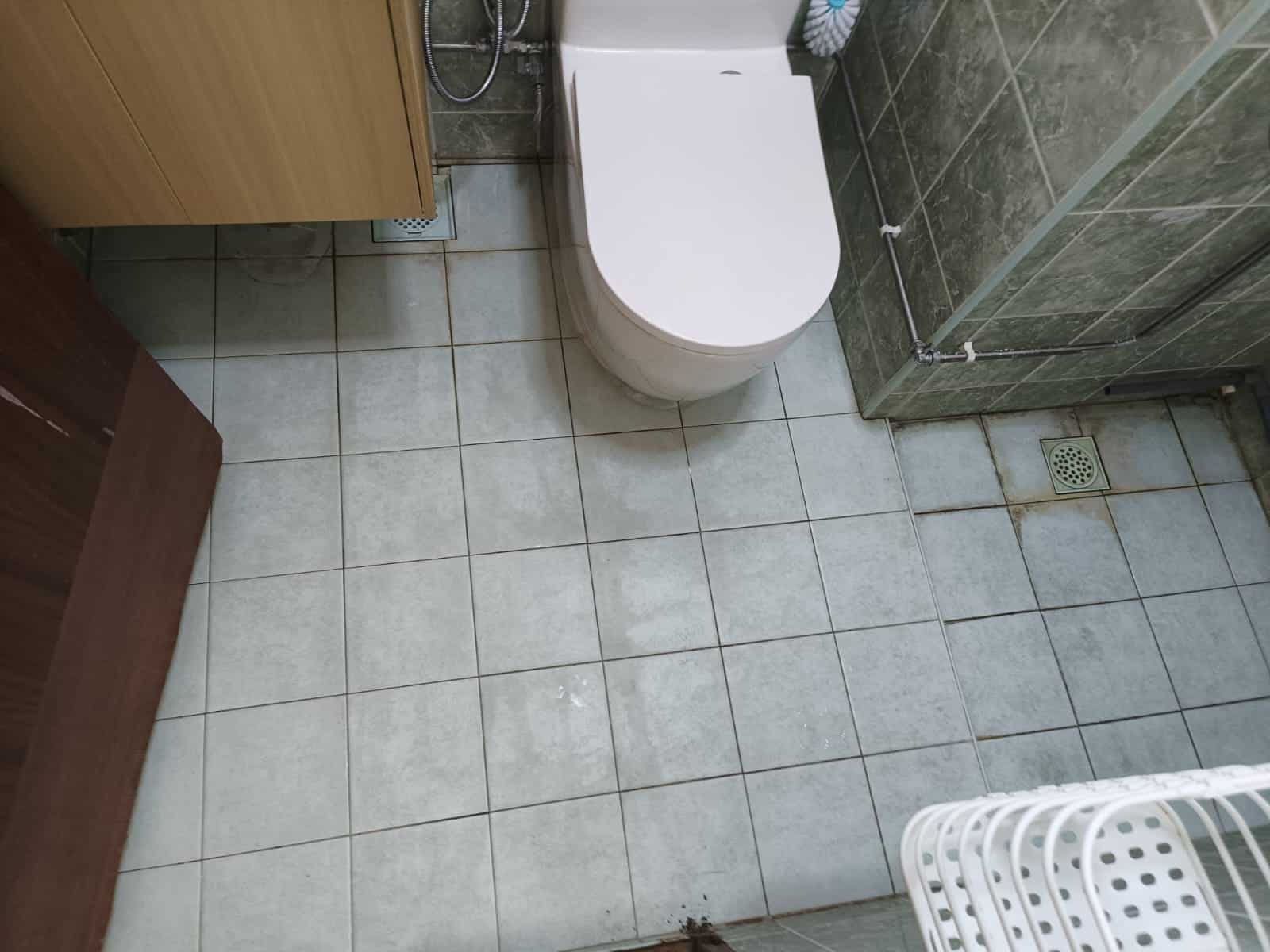
- Surface care and staining: Homogeneous tiles are dense and water-resistant, but polished versions may have microscopic pores at the surface. These are usually protected with a sealant or coating. Over time, daily wear and cleaning can wear down this protective layer, making the surface more prone to staining. This is why bathroom tiles in particular may develop dark patches or dull spots after years of use.
- Appearance over time: While the tile body itself remains durable and water-resistant, the surface can show signs of aging. Soap scum, mineral deposits, or the use of harsh cleaning products may lead to dull patches or dark marks, especially in bathrooms and kitchens. These changes are usually cosmetic and can often be managed with regular cleaning and proper maintenance.
Epoxy Overlay:
Epoxy flooring is valued for its seamless, non-porous surface, which makes it much easier to maintain than tiled flooring. Without grout lines, there are fewer places for dirt, mould, or moisture to accumulate. Still, homeowners should note the following considerations:
- Ease of cleaning: Day-to-day maintenance is simple—regular scrubbing and mopping are usually sufficient. Spills can be wiped up easily, and the non-porous surface prevents liquids or oils from seeping in and leaving stains.
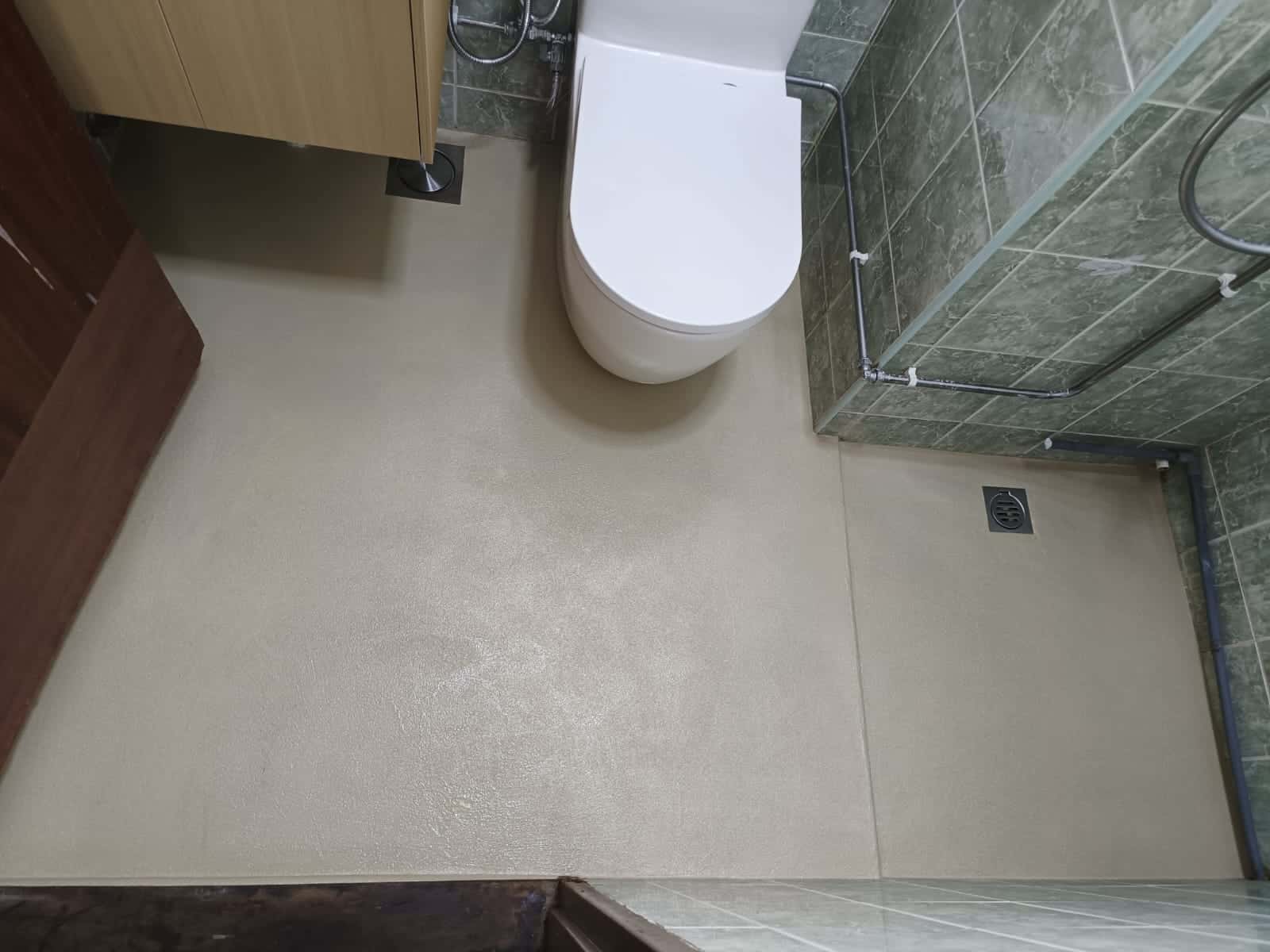
- Mould and water resistance: Epoxy is naturally resistant to water and mould growth, making it an excellent choice for bathroom renovation projects in Singapore, where constant humidity can be a concern. Its non-slip and seamless design adds safety and convenience in wet areas.
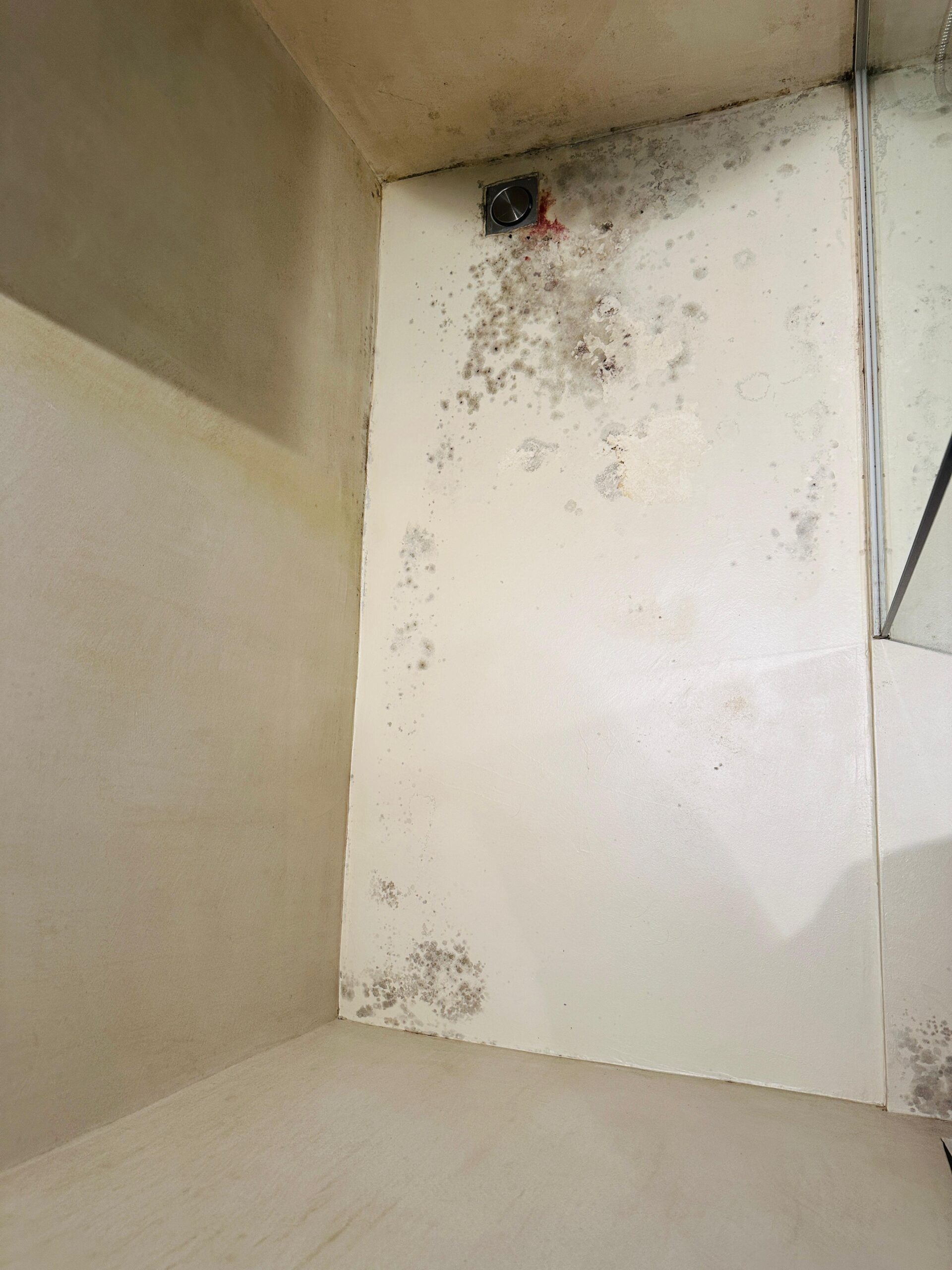

- Durability in practice: While epoxy holds up well against foot traffic and household activities, it is not indestructible. Heavy furniture dragged across the floor or sharp impacts can cause scratches, chips, or surface dulling. In such cases, touch-ups or refinishing can improve the appearance, though there may be slight colour variations compared to the original surface.
- Chemical resistance: Epoxy is resistant to most common household cleaning products, but harsh or abrasive cleaners should be avoided as they can damage the surface coating or dull the shine. This applies across different finishes, from sleek metallic epoxy styles to more subtle microcement looks
- Appearance Over Time
Epoxy flooring is also designed to be long-lasting and resistant to everyday wear. Over years of use, particularly in high-traffic areas, the surface may lose some of its original sheen or develop minor scratches. In such cases, homeowners may choose to refresh the surface for aesthetic purposes, though this is not always necessary and does not affect the flooring’s functionality.
Where Each works best
Kitchen Flooring
The kitchen is a high-traffic area where both style and practicality matter. Tiles remain a popular choice because of their heat resistance, wide variety of designs, and proven durability. From glossy finishes to patterned styles, tiles can complement both traditional and modern kitchen themes. However, grout lines can stain easily with food and oil spills, requiring more effort to maintain their appearance over time.
Epoxy overlays provide a seamless, grout-free alternative that simplifies cleaning and maintenance. One of their strongest advantages in kitchens is anti-slip performance — a vital safety feature in areas prone to spills. In addition, epoxy can be finished in modern microcement-effect or even matte metallic epoxy, which are trending in many HDB flooring options for homeowners who prefer a clean, industrial-inspired look. This makes epoxy flooring a practical yet design-forward option for homeowners seeking both safety and contemporary appeal in their kitchen.
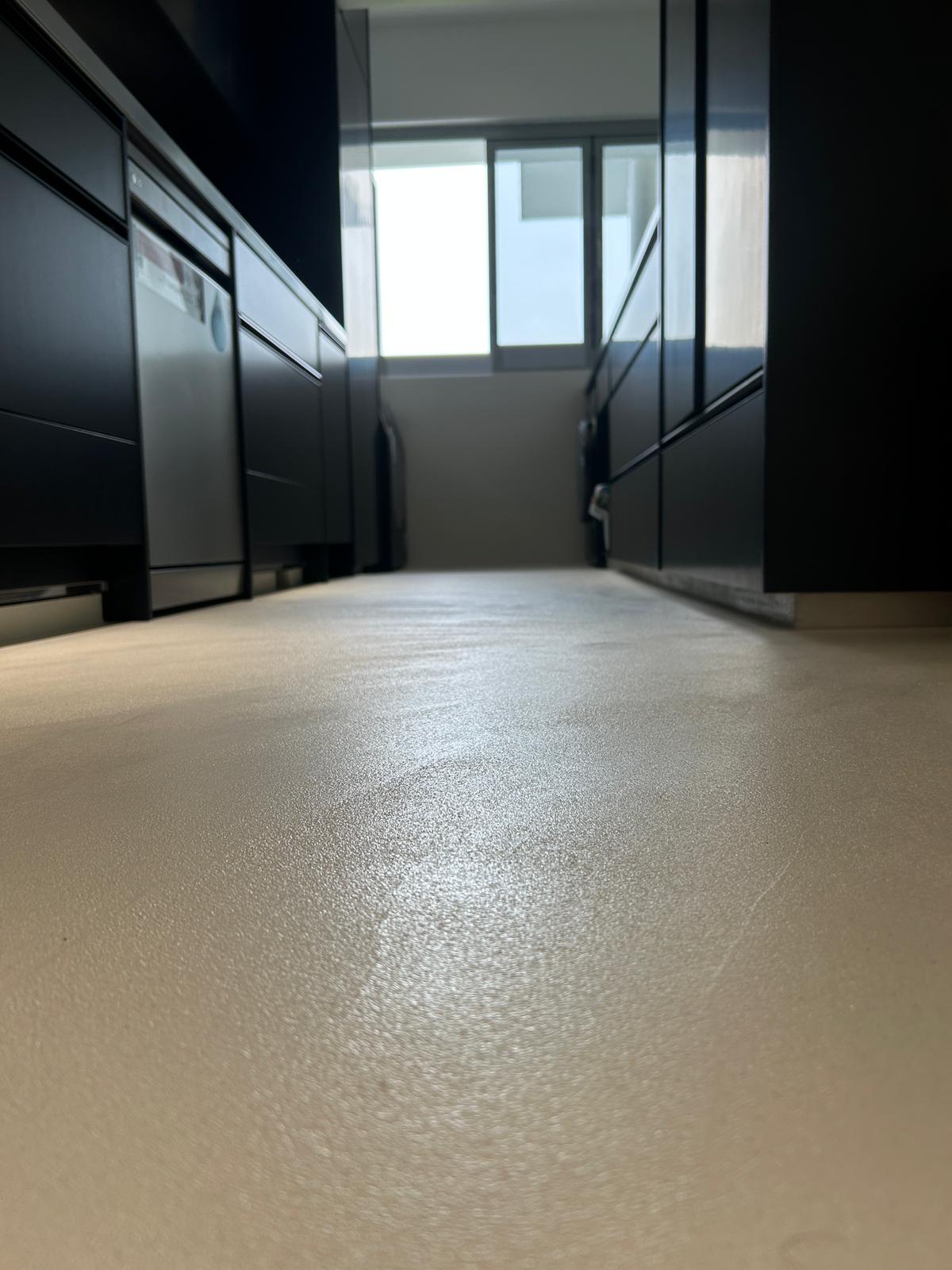

Bathroom Floor and Wall
Both tiles and epoxy overlays can perform well in bathrooms, though they bring different qualities to the space. Tiles have long been the traditional choice, offering timeless designs, a wide variety of colours and finishes, and proven durability in wet environments. However, grout lines between tiles can trap moisture and encourage mould growth if not maintained properly.
Epoxy surfaces, by contrast, create a seamless and grout-free finish, making them an ideal alternative to tiles for toilet renovations in Singapore. Many finishes can also be formulated with non-slip properties, which improve safety. This feature can be particularly important for households with young children or elderly family members, where slip prevention is a priority.
Living Room & Bedroom flooring
If you’re seeking a wide range of textures, colours, and traditional design styles, tiles remain a versatile option that can complement both classic and modern interiors. Epoxy flooring, by contrast, provides a seamless and contemporary finish with minimal grout lines, making it easier to maintain.
From a comfort perspective, tiles tend to feel cooler underfoot, which some people find refreshing in Singapore’s warm climate. Epoxy surfaces generally maintain a more neutral temperature, which may be more comfortable for those who are sensitive to cold floors. This can be an important consideration for elderly residents, who often prefer flooring that does not feel cold underfoot and may otherwise rely on slippers for added comfort.
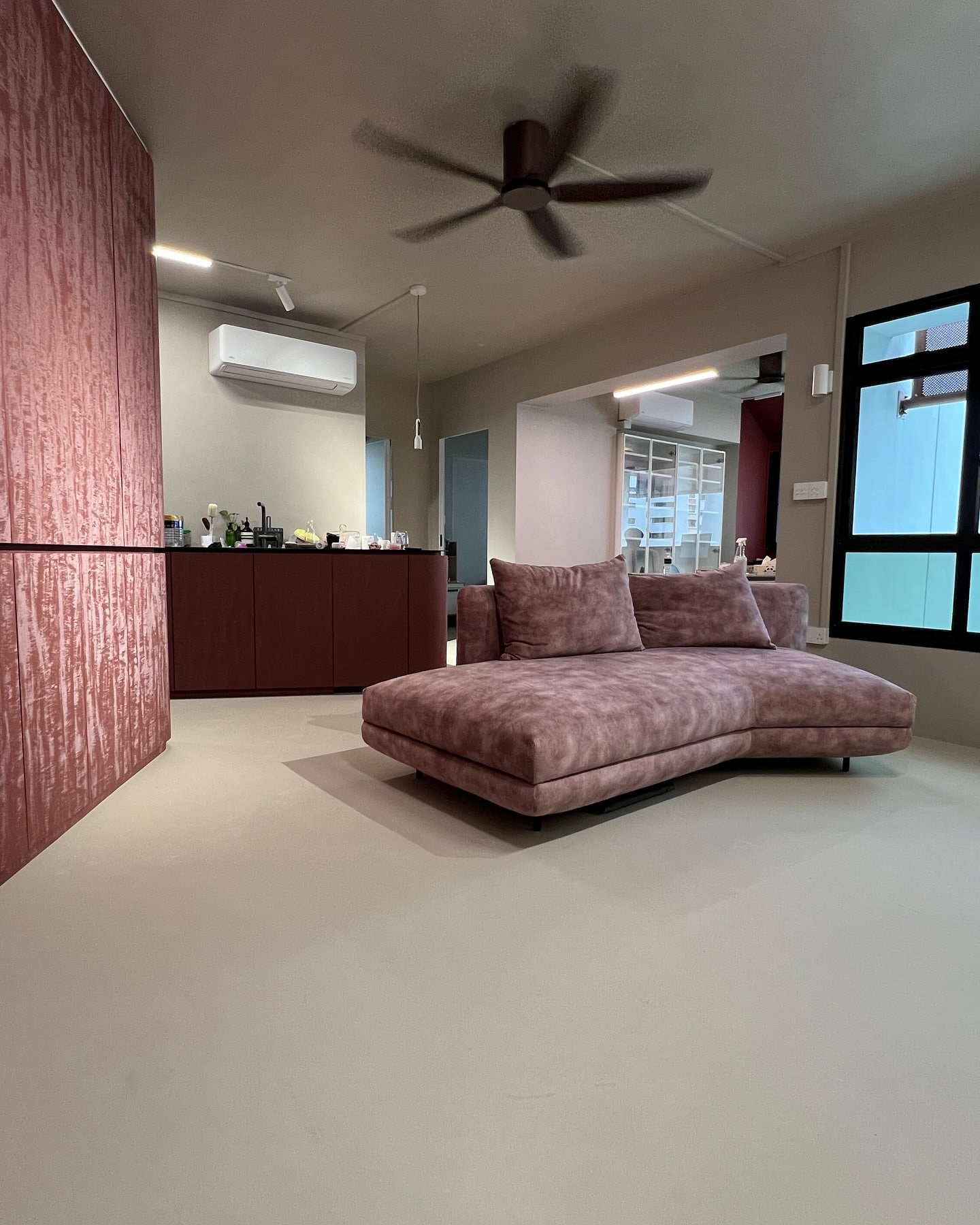
Conclusion
Both tiles and epoxy overlays have their own strengths. Tiles offer a wide variety of styles, textures, and a familiar look that has stood the test of time, while epoxy flooring provides a seamless, modern finish that is easier to maintain and better suited to humid environments. The right choice ultimately depends on your budget, lifestyle needs, and design preferences.
If you’d like to explore how these epoxy options look in real spaces, visit our showroom to explore different finishes in person — from matte metallic epoxy to decorative epoxy flakes and microcement-effect overlays — and discover which flooring solution works best as a stylish tiles alternative for your home.
PebblePro+ by Obalay: Turn Your Home Into a Sanctuary—with the Natural Touch of Pebble floor
Looking to transform your bathroom, balcony, or outdoor area into a space that feels so relaxing like a private spa? Meet PebblePro+, our longest-selling and most trusted epoxy pebble overlay. Developed and perfected by Porousway, PebblePro+ has been on the market for over 15 years — and for good reason.
Whether you’re designing your dream home or upgrading a functional corner, our pebble overlay delivers both looks and performance in one seamless finish.
🌿 What Is PebblePro+?
PebblePro+ is a premium epoxy pebble overlay, made from a curated mix of natural riverbed and crushed stones sourced from around the world, bound together with industrial-grade epoxy resin. It’s applied at a thickness of just 3–5mm, creating a groutless, seamless surface that is anti-slip, and effortlessly beautiful.
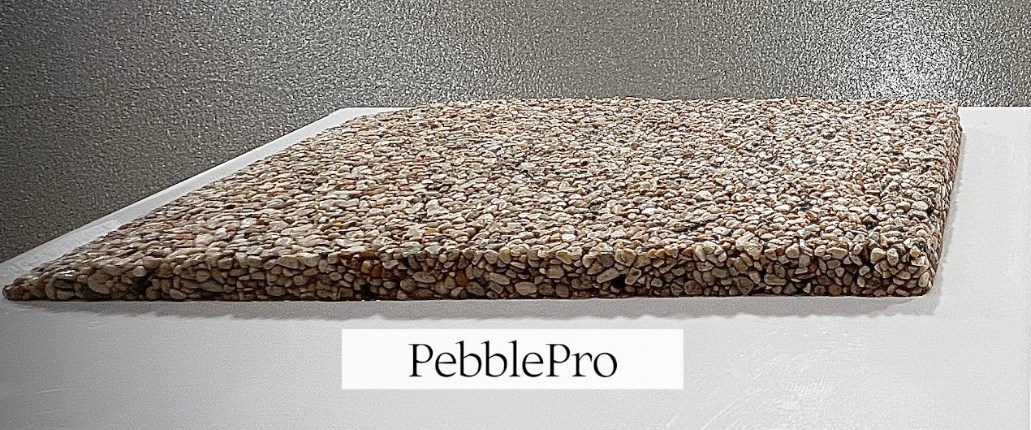
Anti-slip property in the material is not just a coating — it’s a full-surface solution that becomes part of your floor. Designed to withstand daily use without wearing out, PebblePro+ is ideal for wet and high-traffic areas, both indoors and outdoors.
✅ Why Choose PebblePro+?
1. Built-In Anti-Slip Safety — For Life
Unlike traditional anti-slip coatings that wear off over time, PebblePro+ has anti-slip properties embedded into the surface itself. That means no reapplication, no patchy spots from worn-out anti-slip coating, and no compromise in safety, ever.
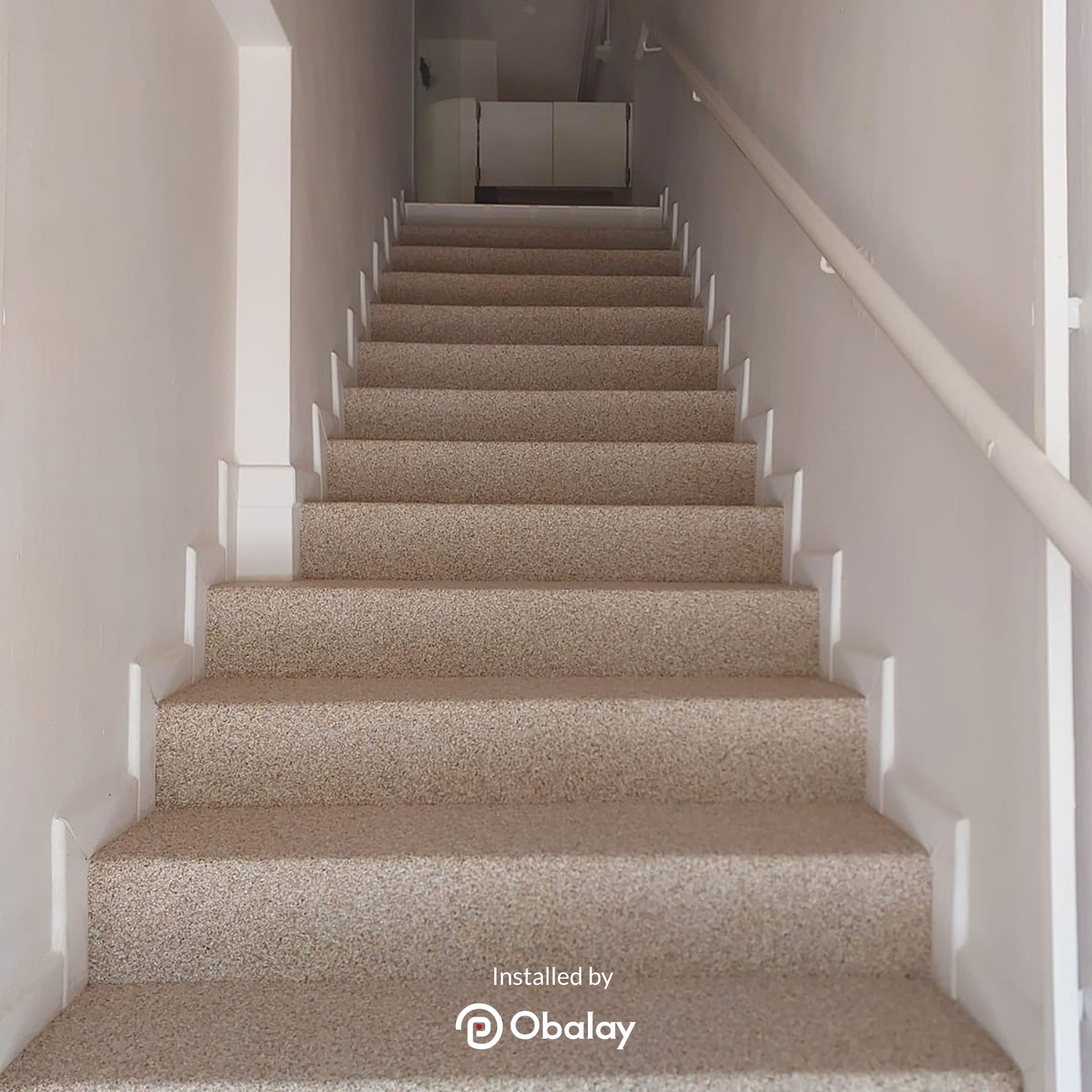
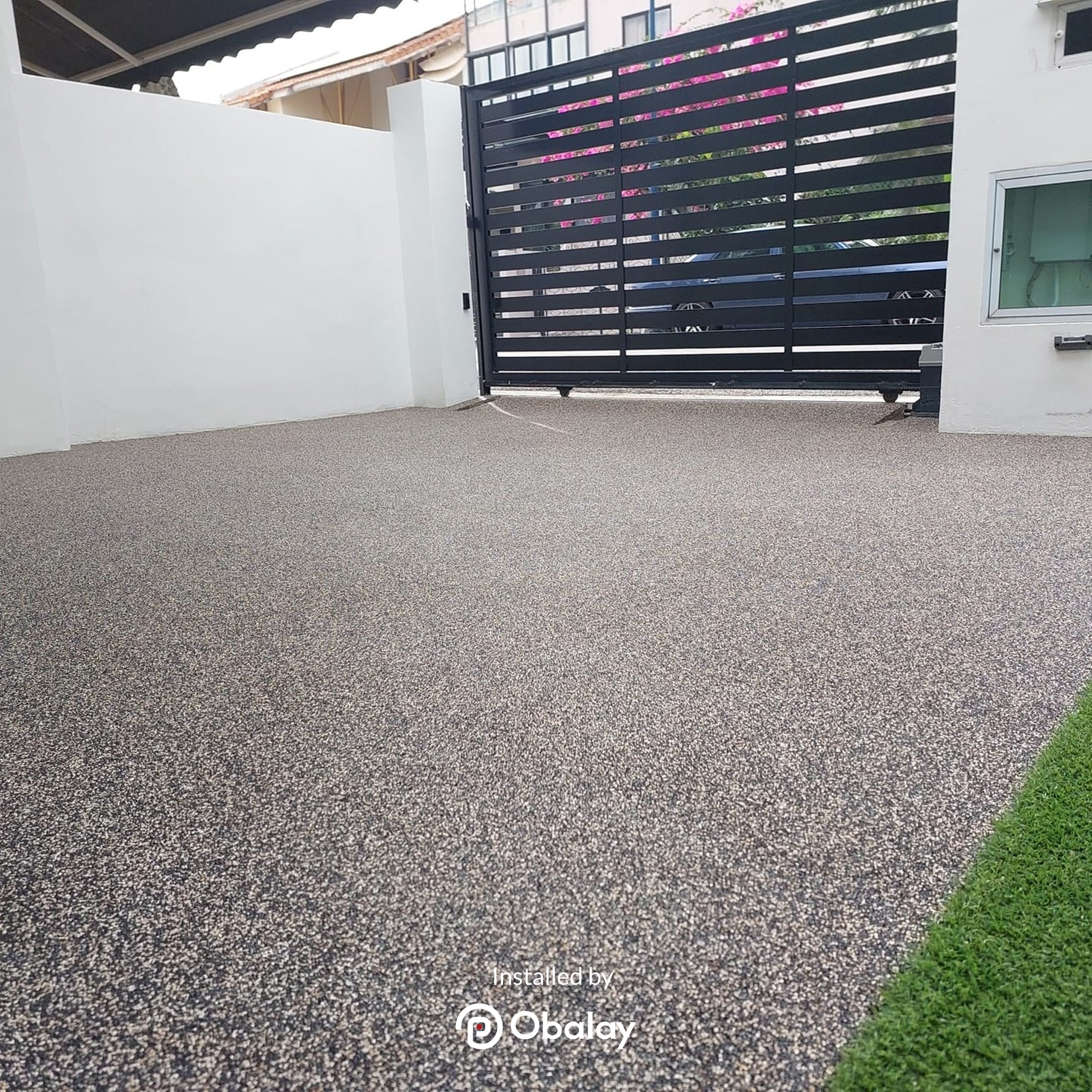
2. Perfect for Indoor, Outdoor and transitioning zones
From balconies and service yards to outdoor walkways and patios, PebblePro+ is built to withstand humidity and daily wear. That said, in areas with prolonged direct sunlight, you might notice a slight yellowing over time — a natural characteristic of epoxy materials being UV-unstable. Fortunately, this doesn’t affect performance, and most users find it subtle, especially when matched with the right colour tone.
Beyond its durability, PebblePro+ also shines in transitional spaces. It offers a beautiful and practical way to connect wet and dry zones — such as bathrooms leading into parquet-floored bedrooms or hallways. Its natural, non-slip texture ensures the transition is not only safe but also smooth and visually seamless.
3. Groutless, Seamless, Stress-Free cleaning
No grout means no grime. The surface is completely groutless and seamless, making it incredibly easy to clean.

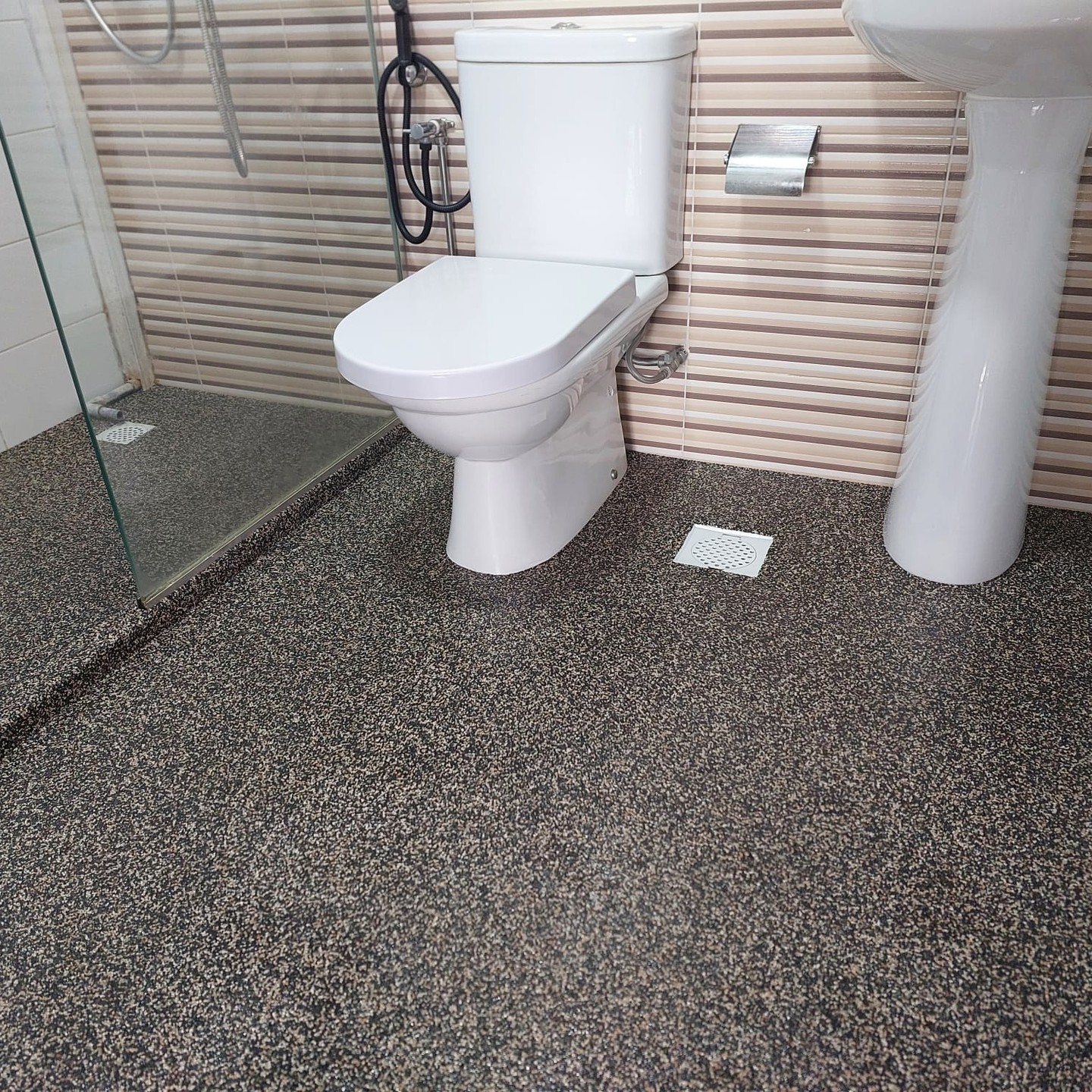
4. Spa-Like Style, Zen Ambience
PebblePro+ was created with both function and feeling in mind. Its natural texture and earthy tones give your bathroom or shower area a calming, spa-like atmosphere — perfect for unwinding after a long day.

5. Customise Your Look
With 10 curated colour options, PebblePro+ lets you choose the perfect tone to match your interior theme — whether you’re going for soft contrasts, bold accents, or natural harmony between floor and wall.

6. Proven Durability, Backed by Long-Term Warranty
PebblePro+ has been tried, tested, and trusted for over 15 years — making it Porousway’s longest-standing and most proven overlay system.
✅ 2-year warranty on materials and workmanship
✅ 5-year guarantee for surface wear
✅ Installed at 3–5mm thickness for strength and longevity
This is a flooring upgrade you’ll enjoy for decades.
🛠️ Where Can PebblePro+ Be Installed?
✅ Toilets & Shower Areas
✅ Balconies & Outdoor Patios
✅ Service Yards
✅ Poolside Areas or Spa Zones
✅ Entryways or Zen Corners in the Home
and many more ….
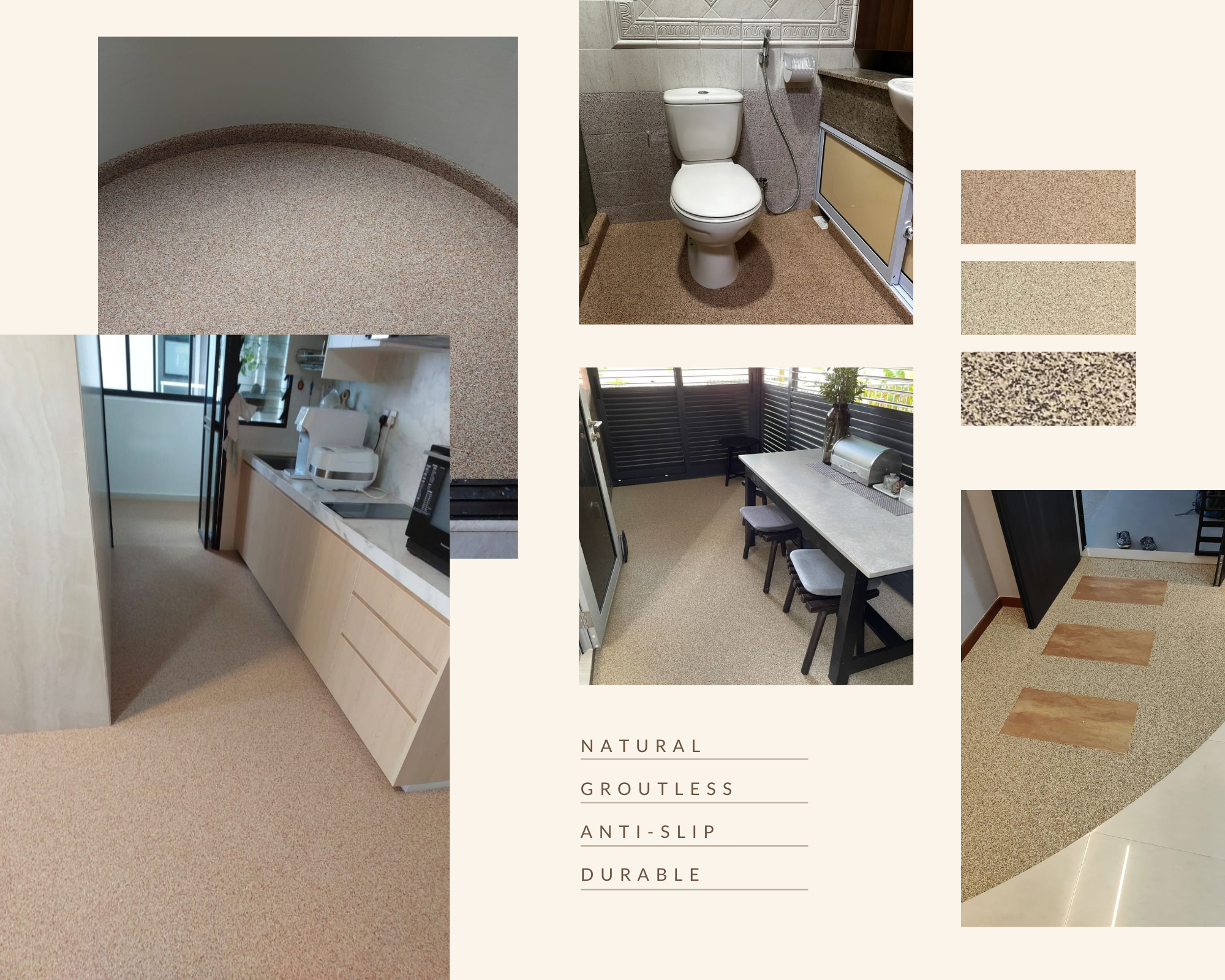
Whether you’re renovating a compact HDB bathroom or giving a new look to your condo balcony, PebblePro+ is a low-maintenance, high performing solution that fits right in!
Overlay Reality Check: What Areas Are Off-Limits?
Epoxy and other surface overlays have transformed the way Singapore renovates, offering faster, cleaner, and more affordable upgrades. Epoxy overlays can be applied on most firm and solid surfaces, including tricky ones like ceramic and glass. While incredibly versatile, there are some surfaces that simply aren’t suitable for overlaying.
In this guide, we break down where overlays can’t (or shouldn’t) be applied, and why, so you can plan your renovation with realistic expectations.
1. Uneven or Severely Damaged Floors
Epoxy overlays need a flat and stable base to bond properly. If your existing flooring is:
- Uneven or Unscreeded
- The surface is coming out loose
- Heavily Worn or Damaged
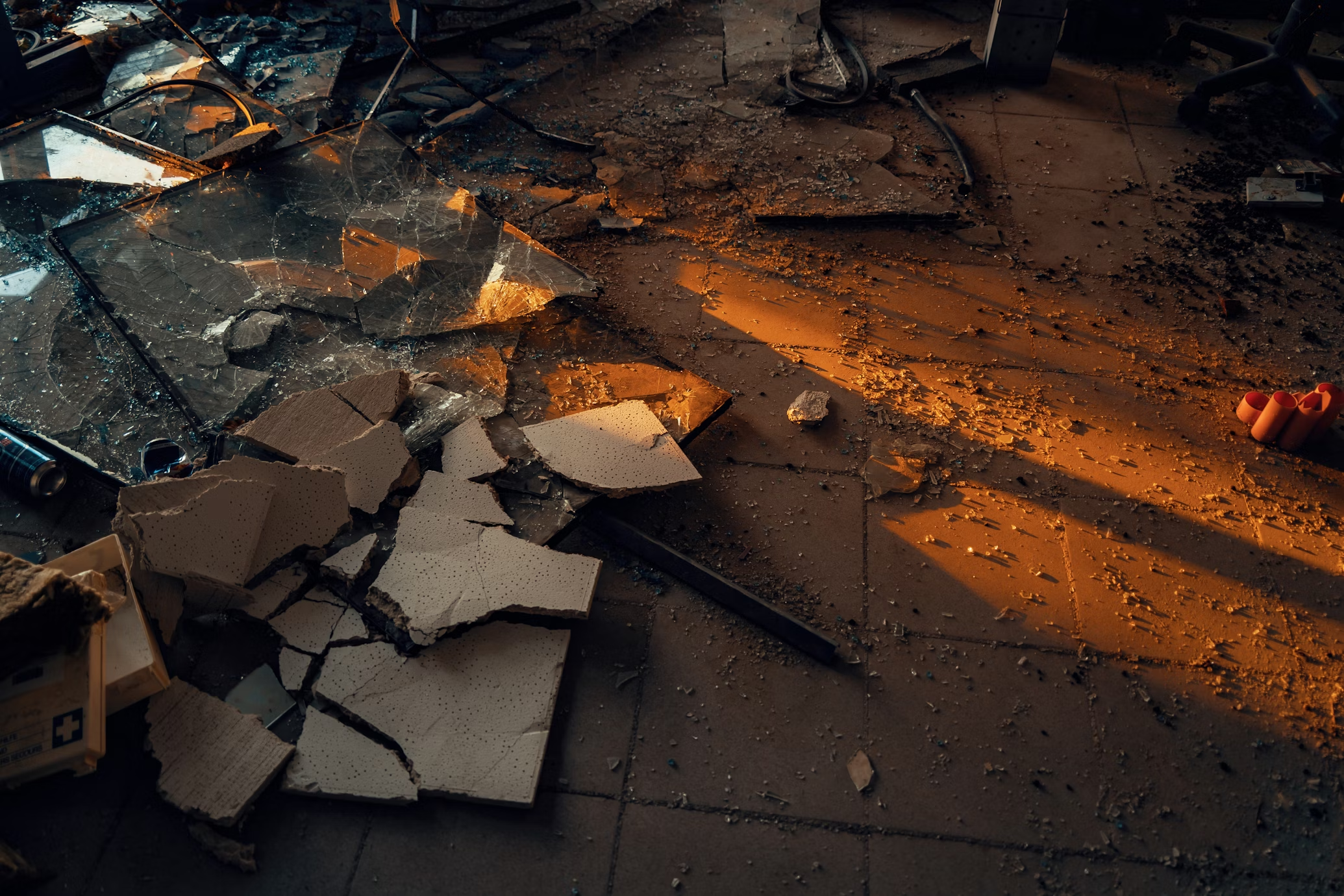
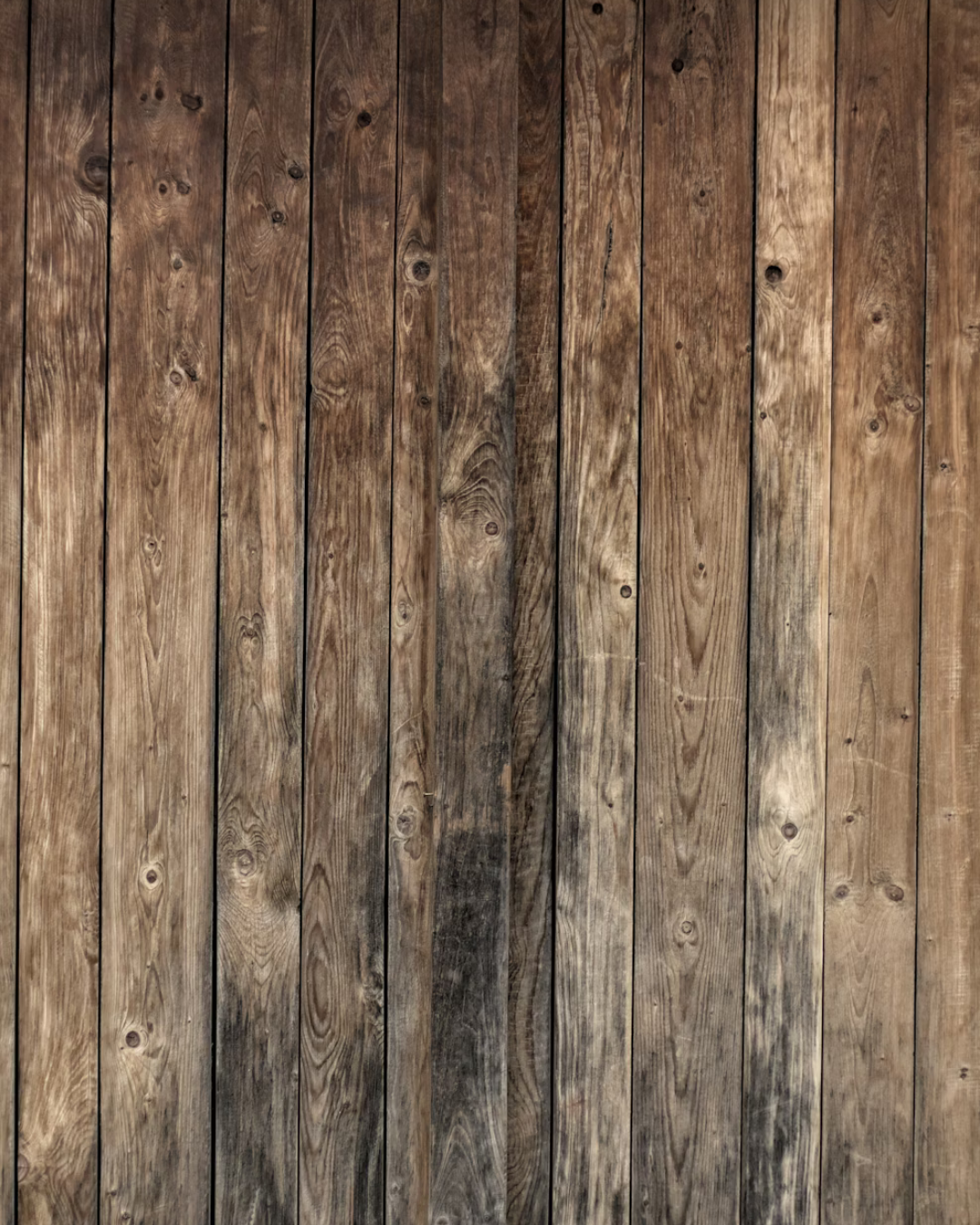
2. Wood Flooring/Vinyl
Natural wood expands and contracts especially in wet areas where moisture can be absorbed easily.
Commonly seen Vinyl and parquet floors consist of individual pieces joined together, allowing slight movement as they expand and contract with temperature and humidity changes. These joints and natural flexibility cause shifting, which can make epoxy overlays crack or lift since epoxy requires a solid, stable surface without movement.
However, in dry areas with minimal moisture absorption, applying an overlay on top may still be possible.
✅ Reality Check: Removal or subfloor preparation is usually needed.
3. Painted Surfaces
Surfaces that have been painted — whether with standard wall paint or epoxy paint — may seem like solid bases, but they aren’t suitable for overlays. Here’s why:
Painted layers can absorb moisture, especially in humid conditions, leading to hidden dampness below the surface.
Over time, moisture causes paint to flake or blister, which in turn compromises the adhesion of the overlay, making it unreliable as a base.
✅ Reality Check: Paint should be scraped off or removed before applying any overlay to ensure long-term bonding and durability.
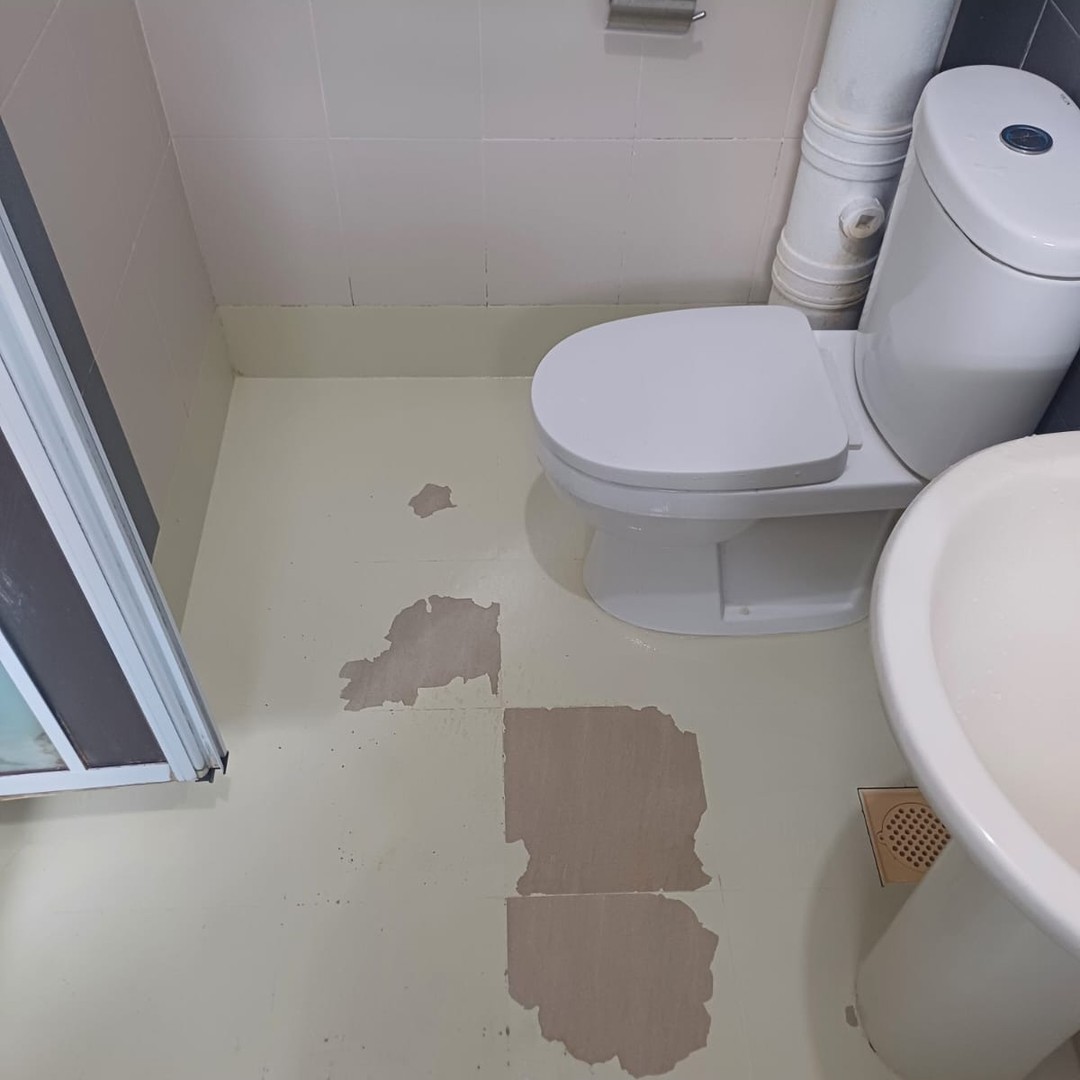

4. Areas Behind Fixed Fixtures or Obstructions
Some areas in your home simply can’t be reached without removing built-in fixtures — and that makes them unsuitable for overlays. These include:
Spaces behind built-in carpentry (like wardrobes or cabinets)
Behind toilet bowls or sanitary fittings
Behind large drainage or sewer pipes (especially in bathrooms)
Tight spaces under cabinets
✅ Reality Check: Overlays should only be applied on fully accessible surfaces. Hidden areas may require fixture removal or should be excluded from overlay works entirely, this may even help you save more cost.
However, in dry areas with minimal moisture absorption, applying an overlay on top may still be possible.
✅ Reality Check: Removal or subfloor preparation is usually needed.
Overlays are a fast, modern way to upgrade your space, but knowing where not to apply them is just as important as knowing where you can. Areas with poor access, unstable substrates can compromise the final result and longevity.
What Is Water Ponding and What Can You Do About It?
If you’ve noticed water collecting and not draining properly in your toilet or shower area for more than 8 hours or so, you might be experiencing what’s known as water ponding. This is an issue that can be seen in both new and older homes, but it shouldn’t be ignored — over time, it can lead to slippery floors and hygiene problems.
Let’s break down what water ponding really is, why it happens, and how you can fix it.
🚿 What Is Water Ponding?
Water ponding refers to the collection of water in some spots on the floor where it doesn’t drain away properly. Instead of flowing towards the floor trap (drain), water remains pooled in certain areas — often after a shower, or cleaning.
❓Why Does Water Ponding Occur?
There are a few common reasons why ponding happens, especially in bathrooms and wet areas:
1. Improper Floor Gradient (Slope)
This is the most common cause. The floor should be built with a slight gradient, sloping towards the drain to guide water flow. If the gradient is too flat — or worse, sloped the wrong way — water will collect and remain stagnant.
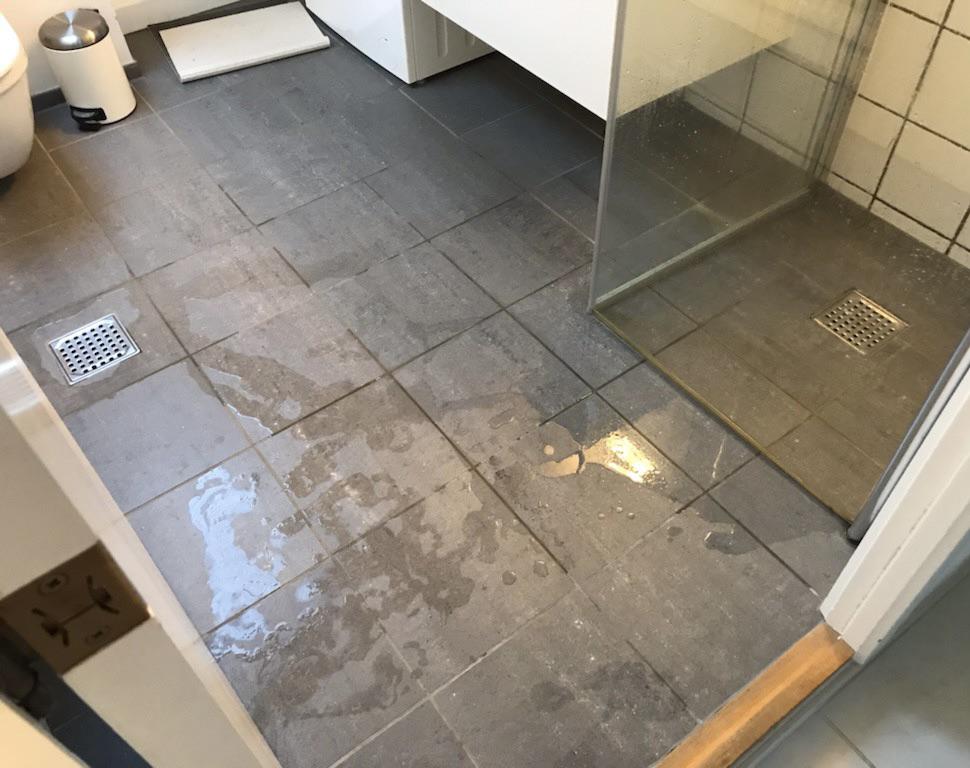
2. Obstructions Blocking Water Flow
Even if the floor has the correct gradient, fixtures like toilet bowl and shower kerb can block the natural flow of water towards the drain, creating “trapped” zones where water collects.
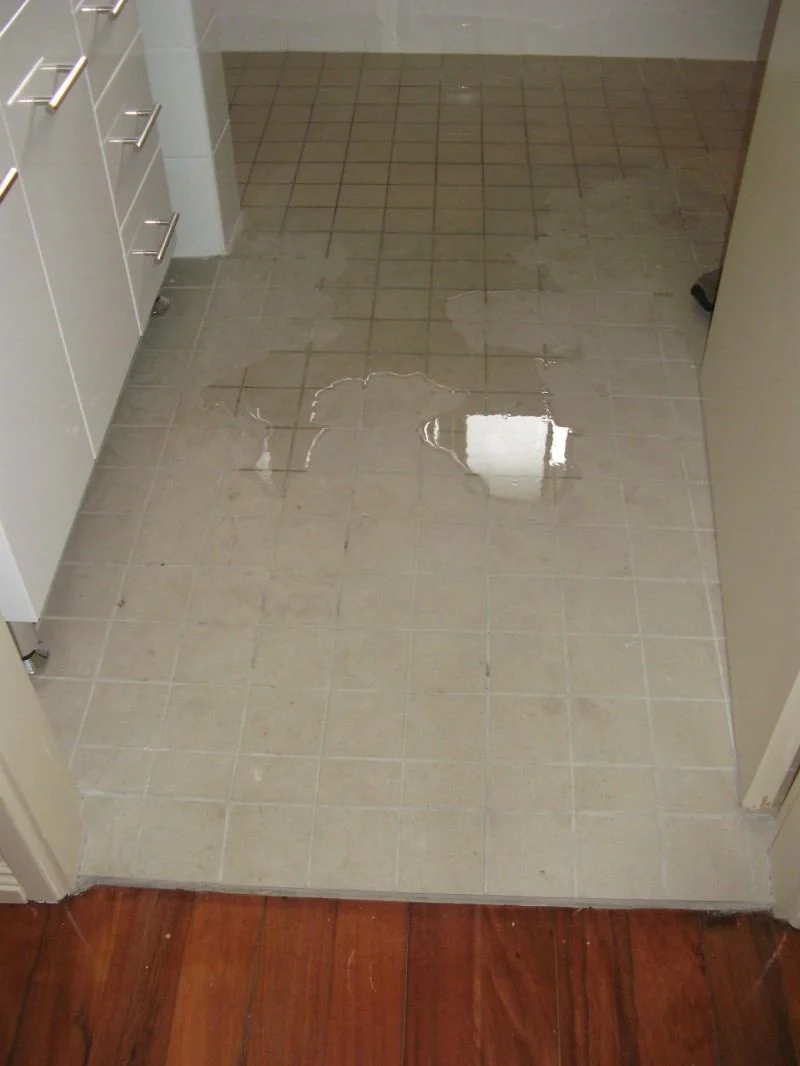
3. Depressed areas due to poorly laid tiles
Uneven tiles can create low spots that potentially trap water. This can lead to mold issues, slippery surfaces, and long-term floor damages.
🚫 Why It’s a Problem
Safety hazard – Water ponding increases the risk of slipping, especially in wet areas.
Hygiene issues – Standing water attracts bacteria, mold, and can cause bad smells.
💡 Bonus Tip: Epoxy Overlay as a Solution
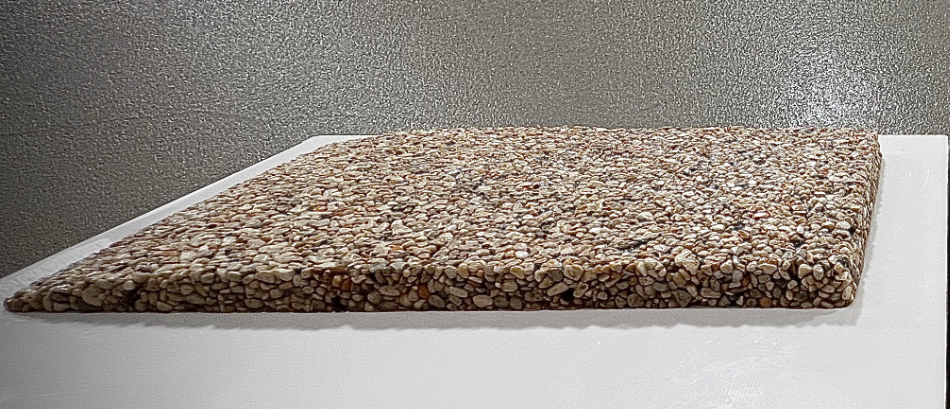
If you’re facing minor water ponding and looking for solutions, this is the perfect time to correct the gradient issues. Epoxy overlays can add a slight build-up in height during application, which helps to improve floor slope and address minor water ponding problems — giving you a clean, level surface that looks good and drains better too. However, for more severe water ponding issues, simply adjusting the gradient with an overlay may not be enough to fully resolve the problem.
Final Thoughts
Water ponding might seem like a minor annoyance, but over time it can cause big issues. The good news? It’s preventable and fixable.
By understanding what causes the ponding and how to address it, you’ll enjoy a cleaner and a safer home.
What is an epoxy overlay and why is it a popular choice in Singapore now?
If you’re renovating your home or commercial space, you’ve probably heard about epoxy overlays. They’re quickly becoming one of the most popular renovation options — and for good reason.
In this guide, we’ll explain what epoxy overlay is, why it’s trending in Singapore, and whether it’s the right solution for your space.
What Is an Epoxy Overlay?
An epoxy overlay is a layer made from epoxy resin that’s applied over existing surfaces such as tiles, cement floors, or countertops. Once cured, it forms a tough, seamless, and stylish surface that’s easy to maintain and built to last.
Think of it as a way to “wrap” your existing surfaces in a protective layer without tearing anything down.
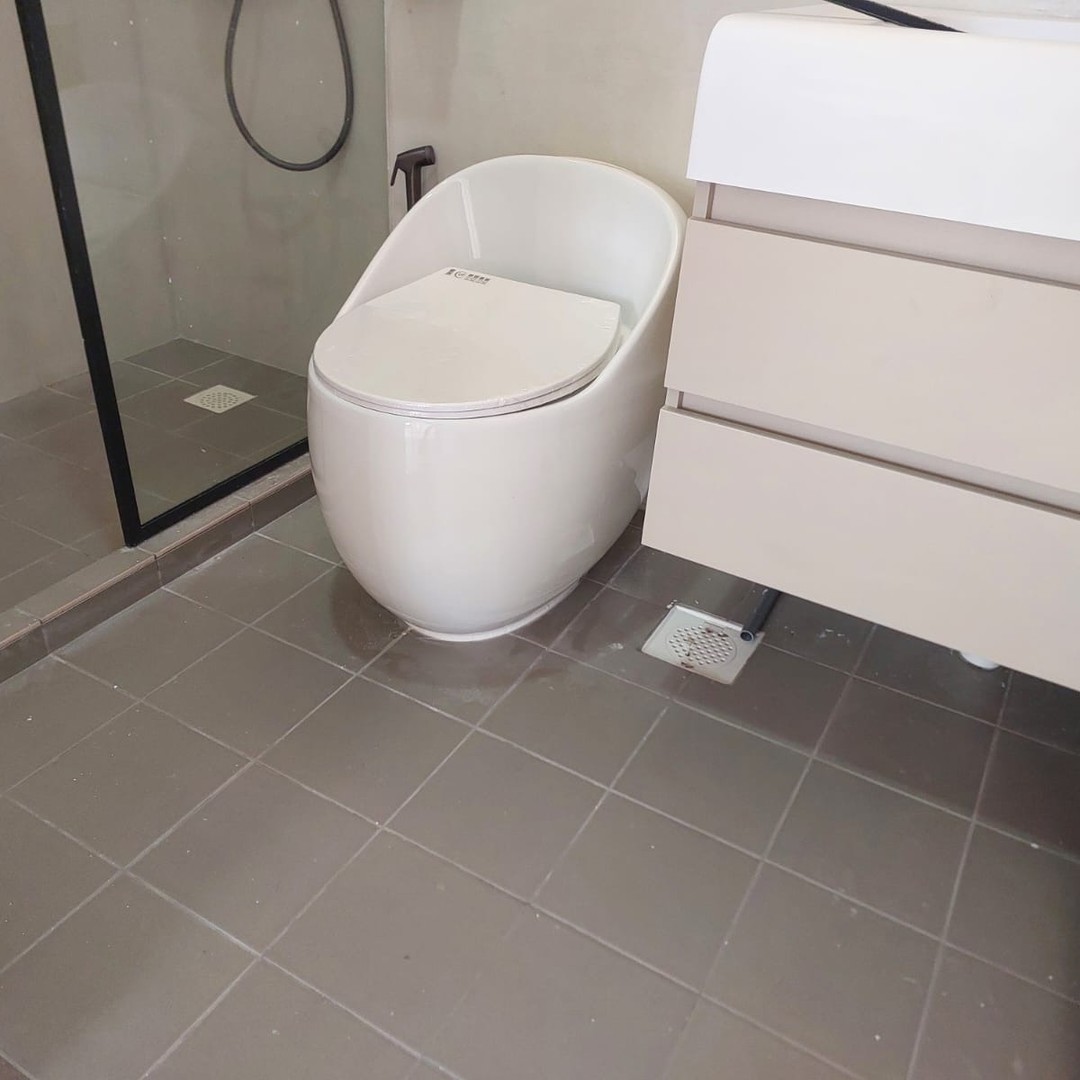
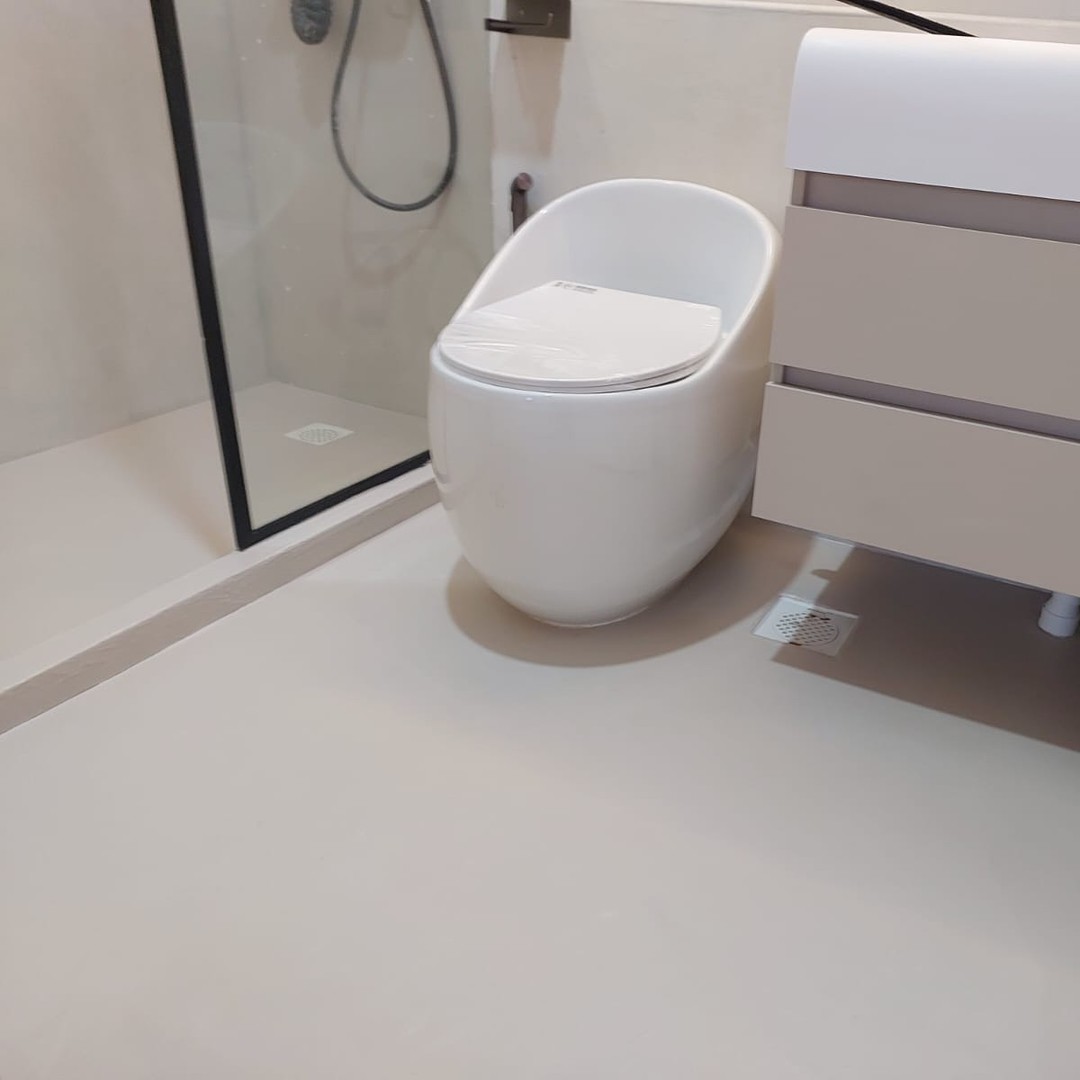
Why Singapore Homeowners Love Epoxy Overlays
Here are 5 solid reasons why epoxy overlays are becoming a go-to renovation option in Singapore:
1. No Hacking Required
One of the biggest pain points in renovation is the mess and cost of hacking old tiles. With epoxy, you can simply apply the new surface on top of your existing flooring or wall.
That means no noise, no debris, no extra hacking fees and no need to apply for HDB Renovation Permit or MCST.
✅ How convenient !
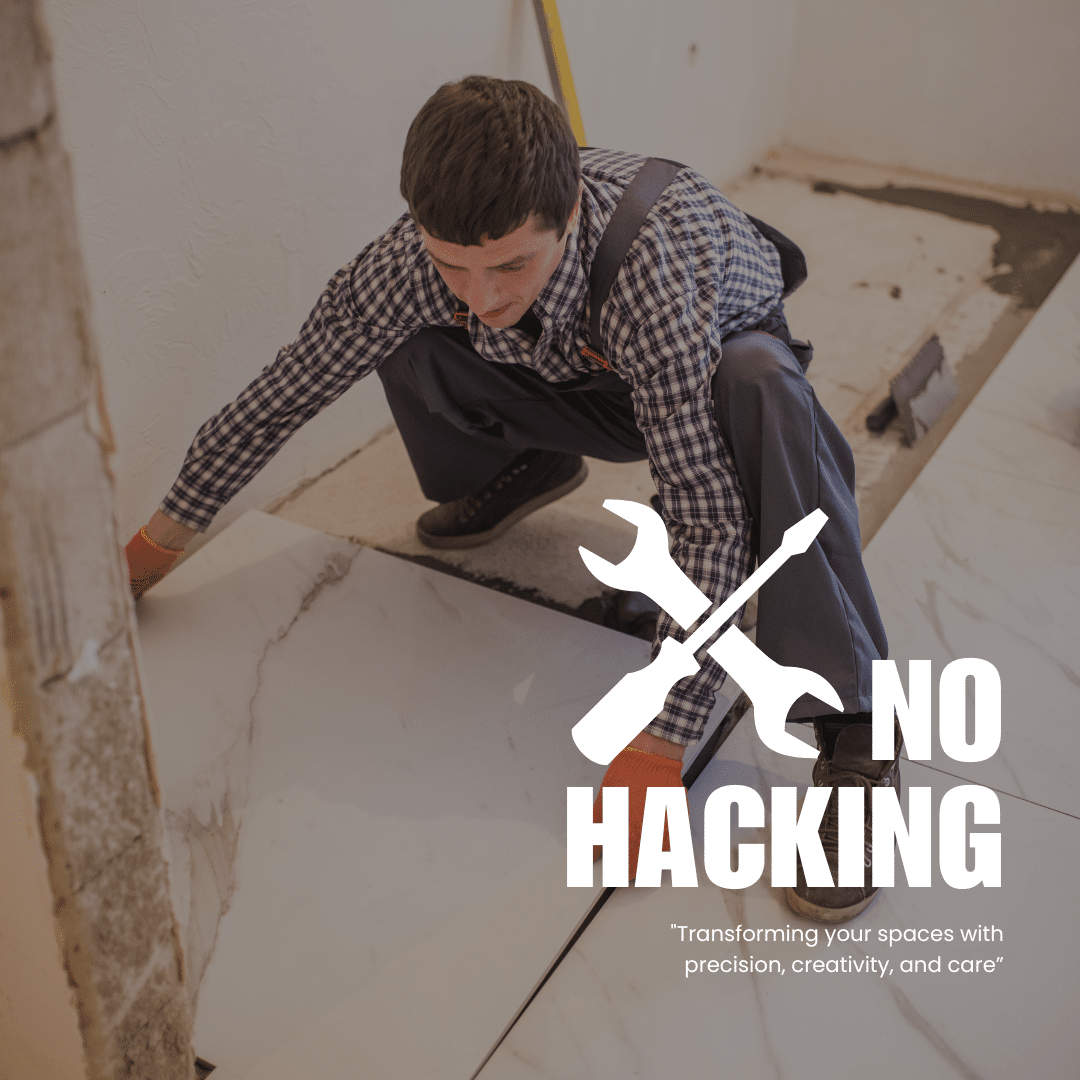

2. Saves Time and Money
Labour costs in Singapore can be expensive, and Epoxy overlays are cost-saving as they can be installed quickly — most homes can be done in 1–2 days. That also means less downtime.
✅ Quick, mess-free, and wallet-friendly!
3. Varieties of styles/textures to choose
Epoxy overlays come in a wide range of looks and finishes. From microcement-inspired looks, flake wall finishes, Marble-look designs, raw rustic industrial tones — there’s something for every style.
Choose from high-gloss or matte finishes, and enjoy the option of a smooth, velvety touch underfoot. Need anti-slip textures for bathrooms and toilets? That’s available too. Want a minimalist look? Or maybe something vibrant with layered colours? You can even achieve today’s trending lime wash effect.
✅ So many looks, Epoxy makes it possible !
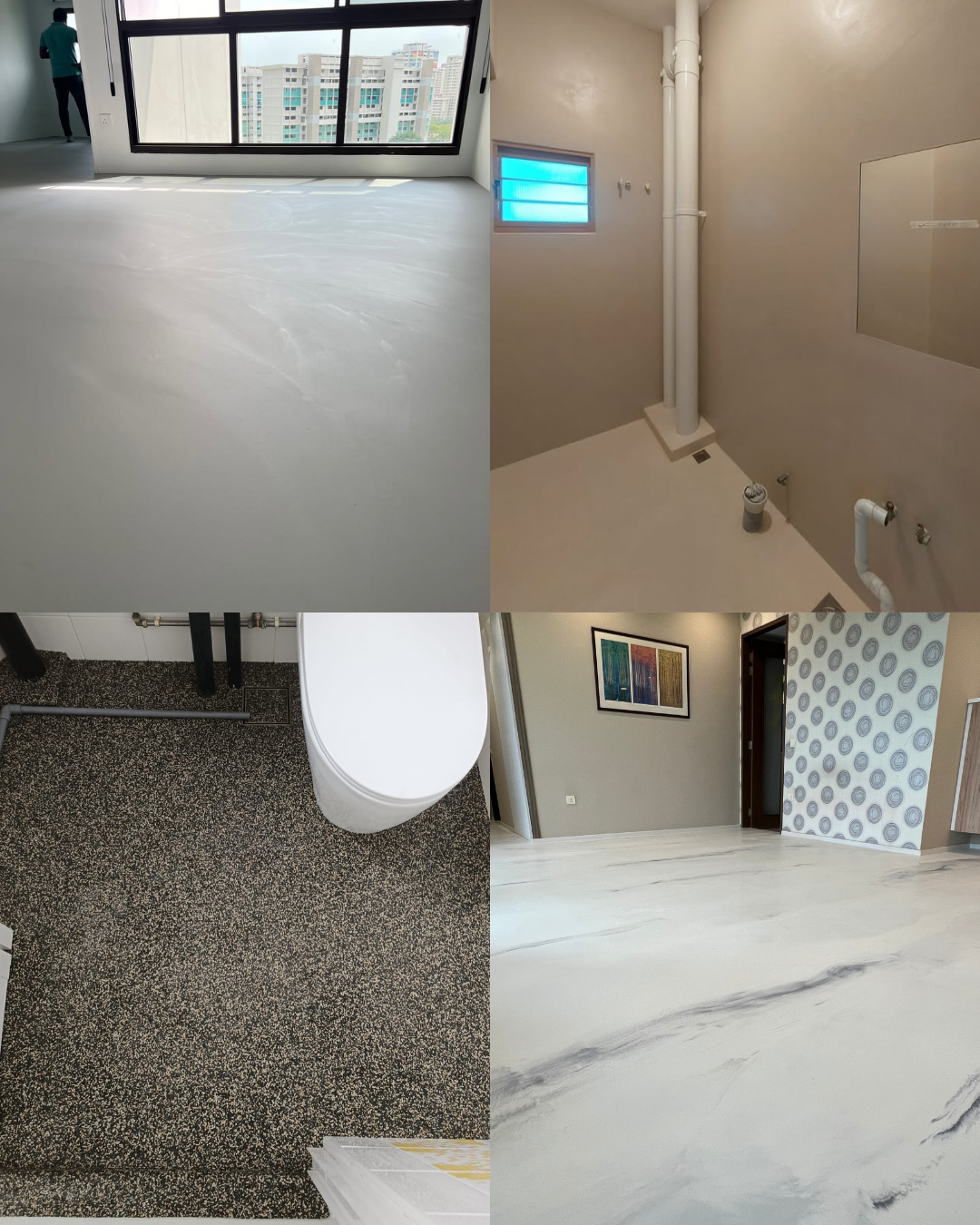
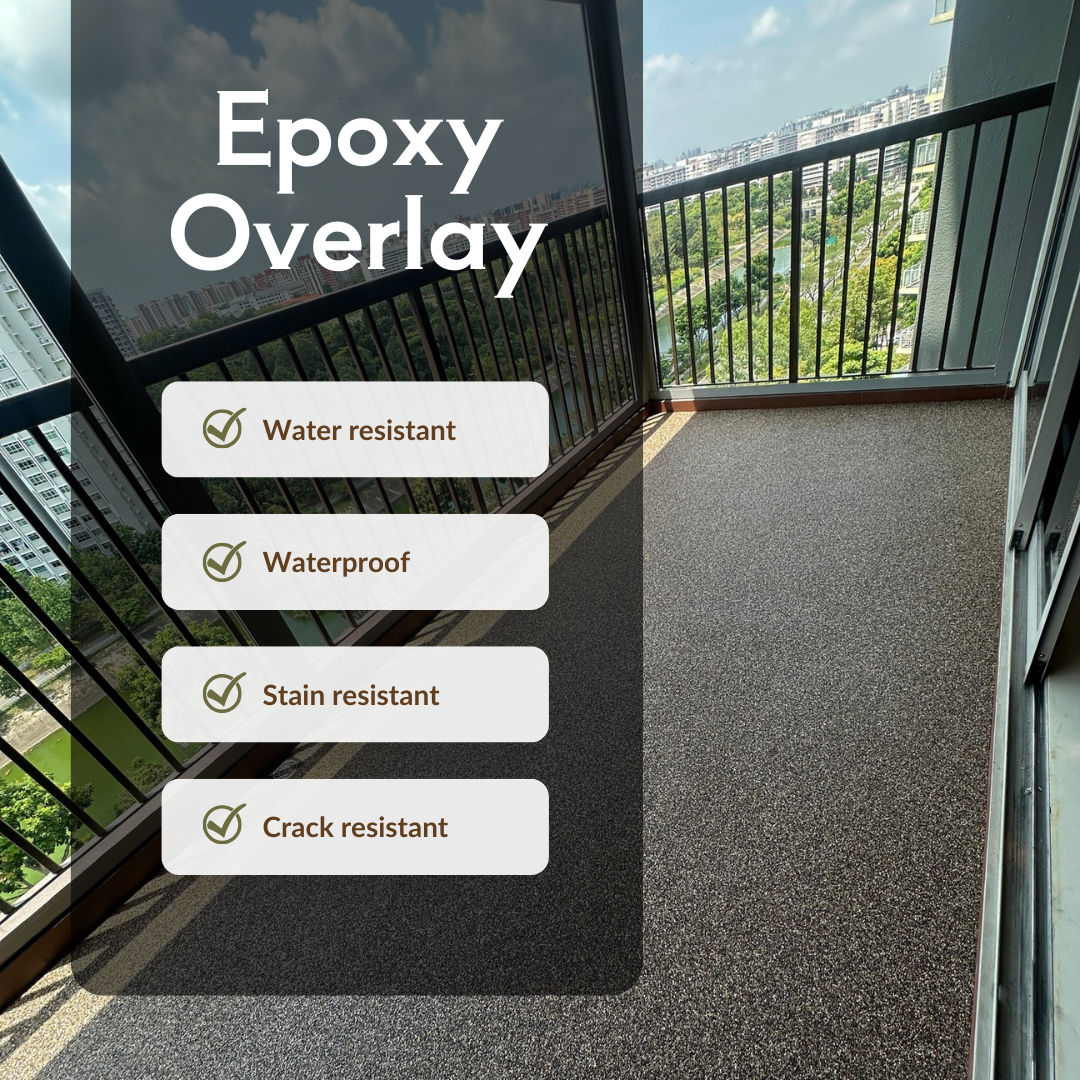
4. Built for Singapore’s Climate
Singapore’s heat and humidity are no match for epoxy. Epoxy itself is non-porous, which means water, dirt, and even chemicals can’t seep into the material. It’s moisture, stain & crack resistant — making it ideal for every single space in your home, wet or dry.
It’s also worth noting that epoxy surfaces are highly water-resistant (some even waterproof), so you might notice that water tends to sit on the surface a bit longer — especially in areas with limited airflow. With proper ventilation, this is hardly an issue, but it’s something to keep in mind for bathrooms or balconies.
Additionally, as with many resin-based materials, epoxy has a natural warm tint and may develop a slight yellowish tone over time when exposed to direct sunlight. Choosing sun-friendly shades like warm neutrals or lighter tones can help keep your surfaces looking fresh.
✅ Made for tropical living!
5. Seamless and Easy to Clean
No more grime stuck in grout lines — because with epoxy overlays, there are no grout lines at all. The surface is completely groutless and seamless, preventing stain or dirt from getting trapped over time. It is also incredibly easy to maintain — just soap, scrub and rinse like a regular flooring.
✅ Hello stress-free cleaning!

Final Thoughts
Epoxy overlays are more than just a design trend — they’re a smart, practical solution for Singapore homes and businesses. If you’re looking to renovate with less hassle and better results, epoxy might just be the answer.
